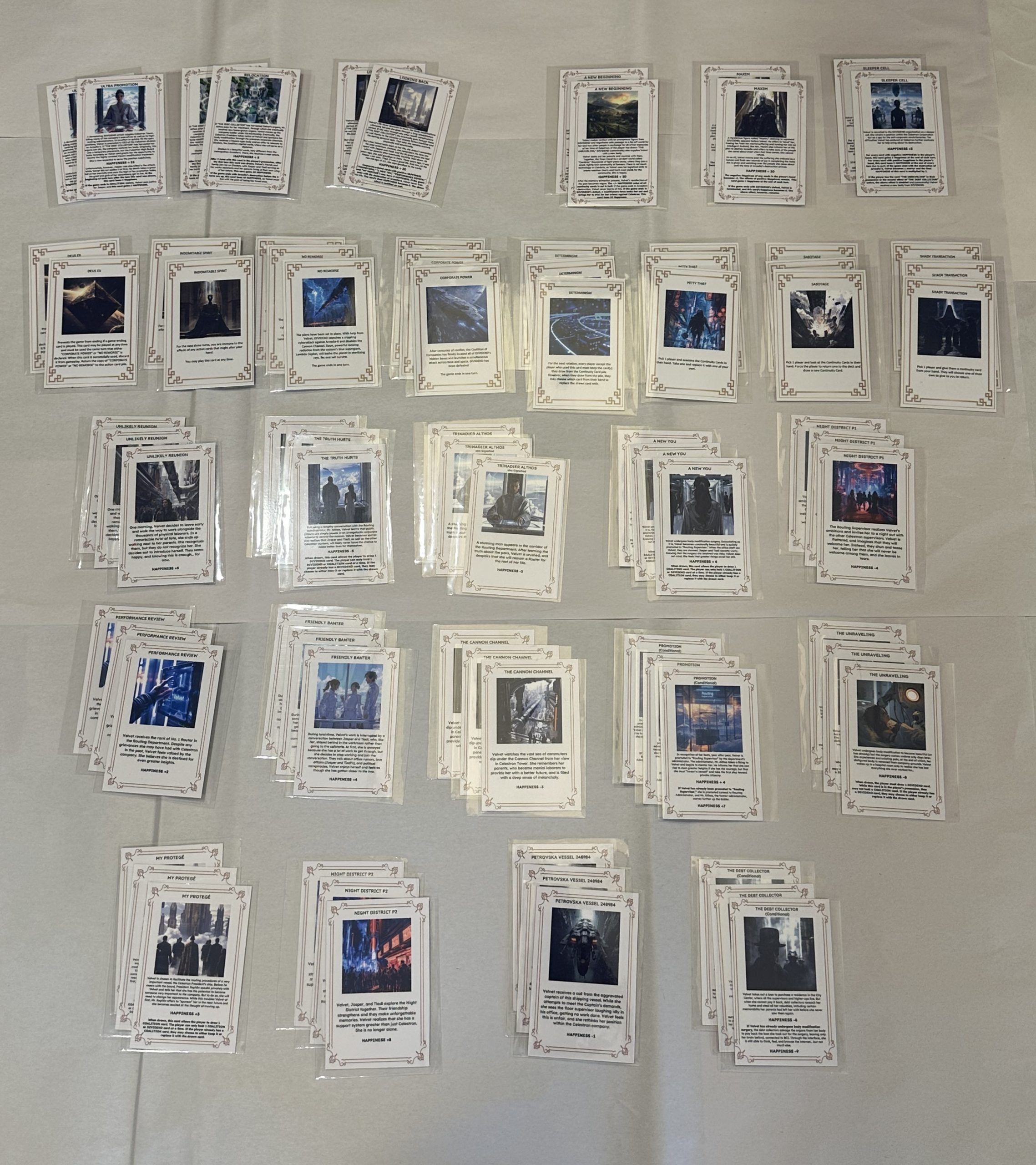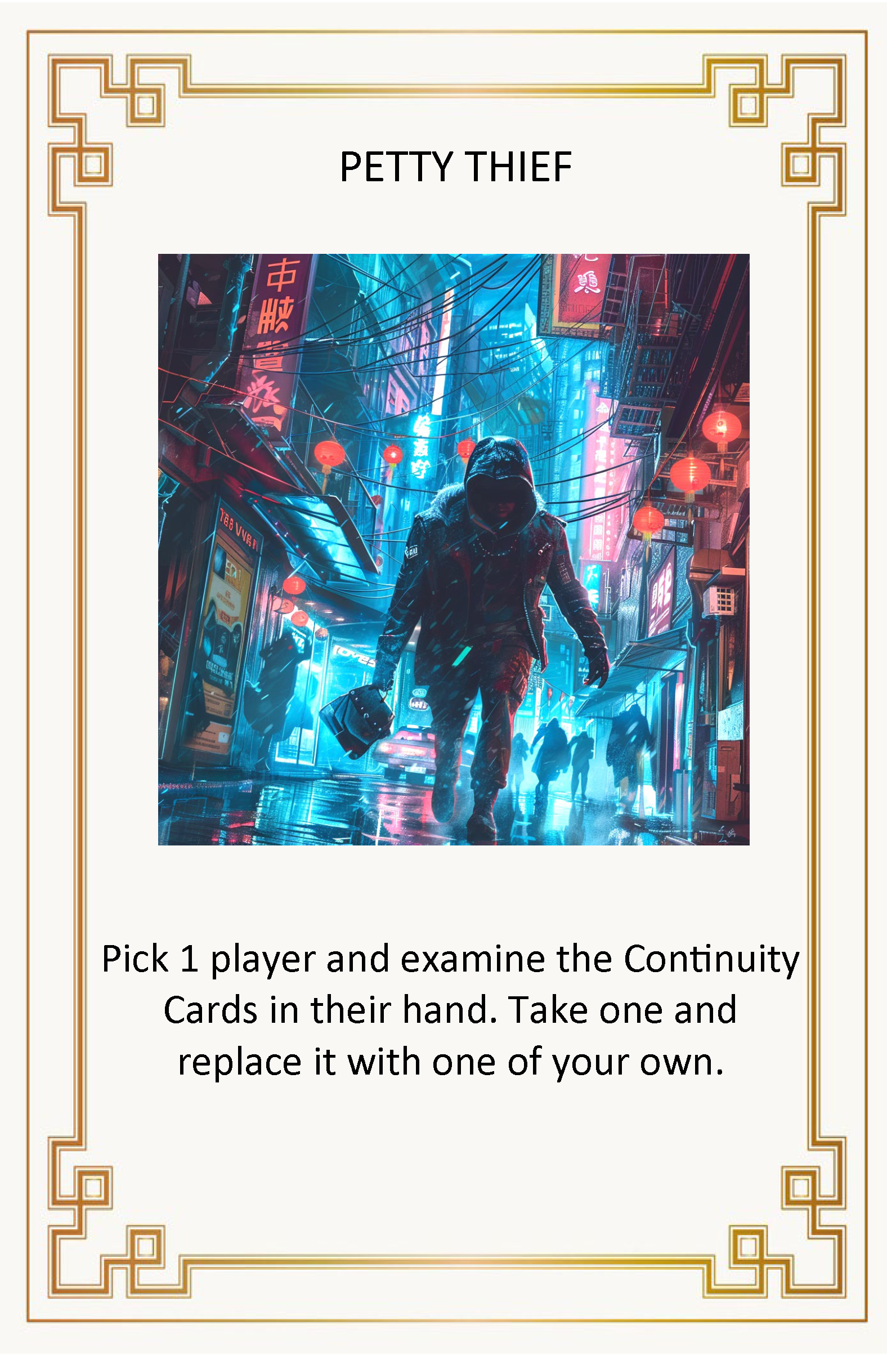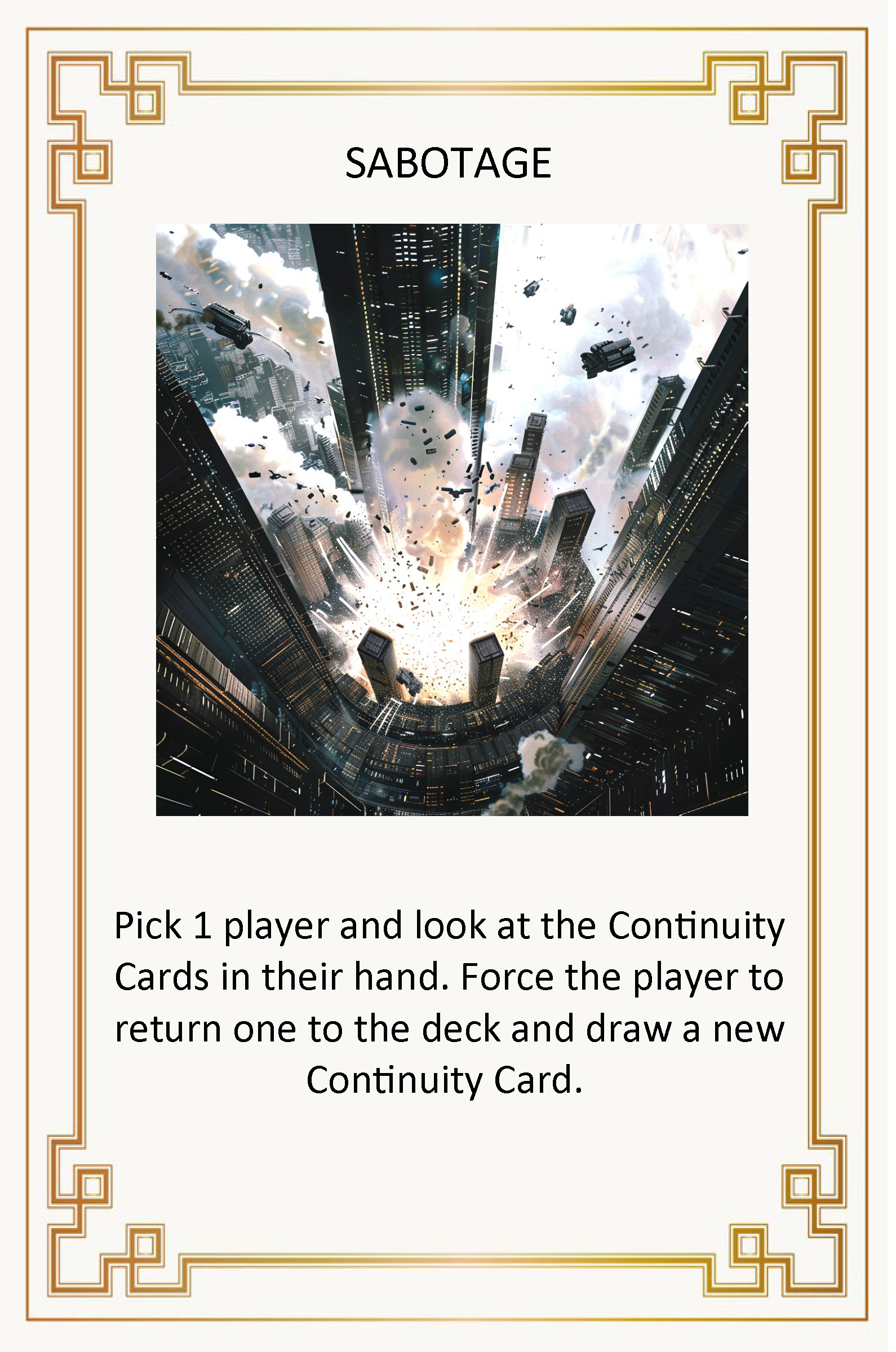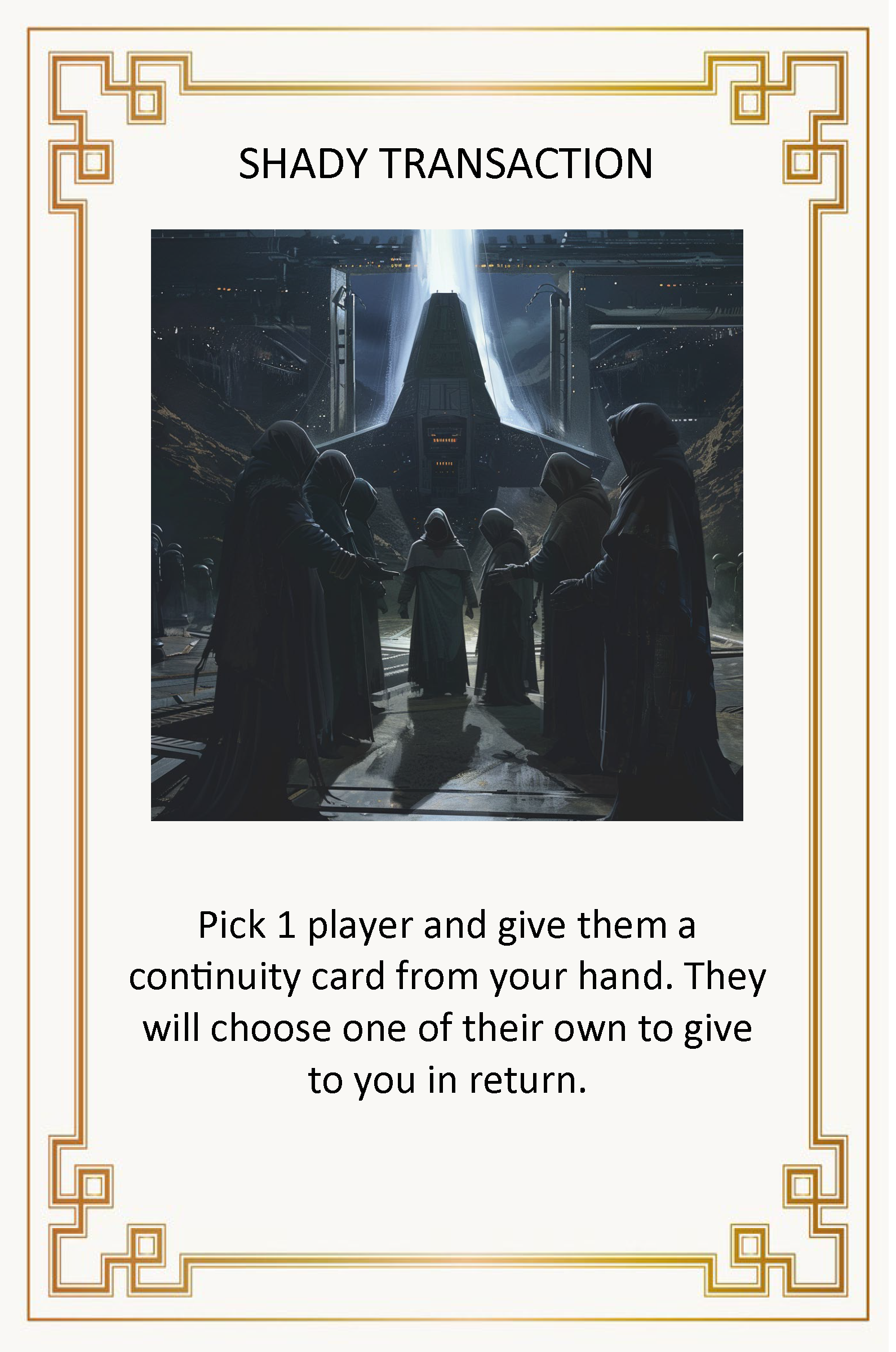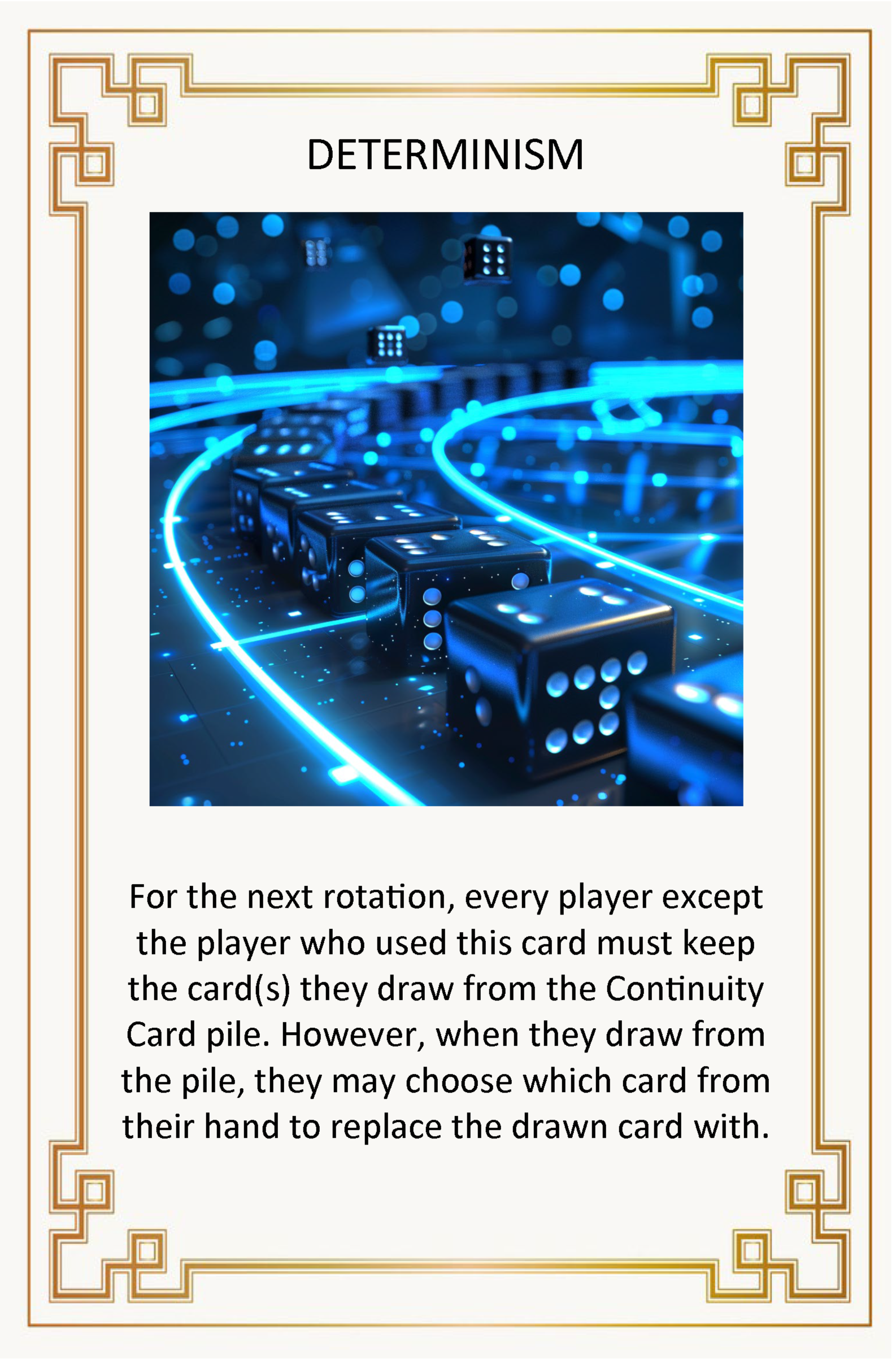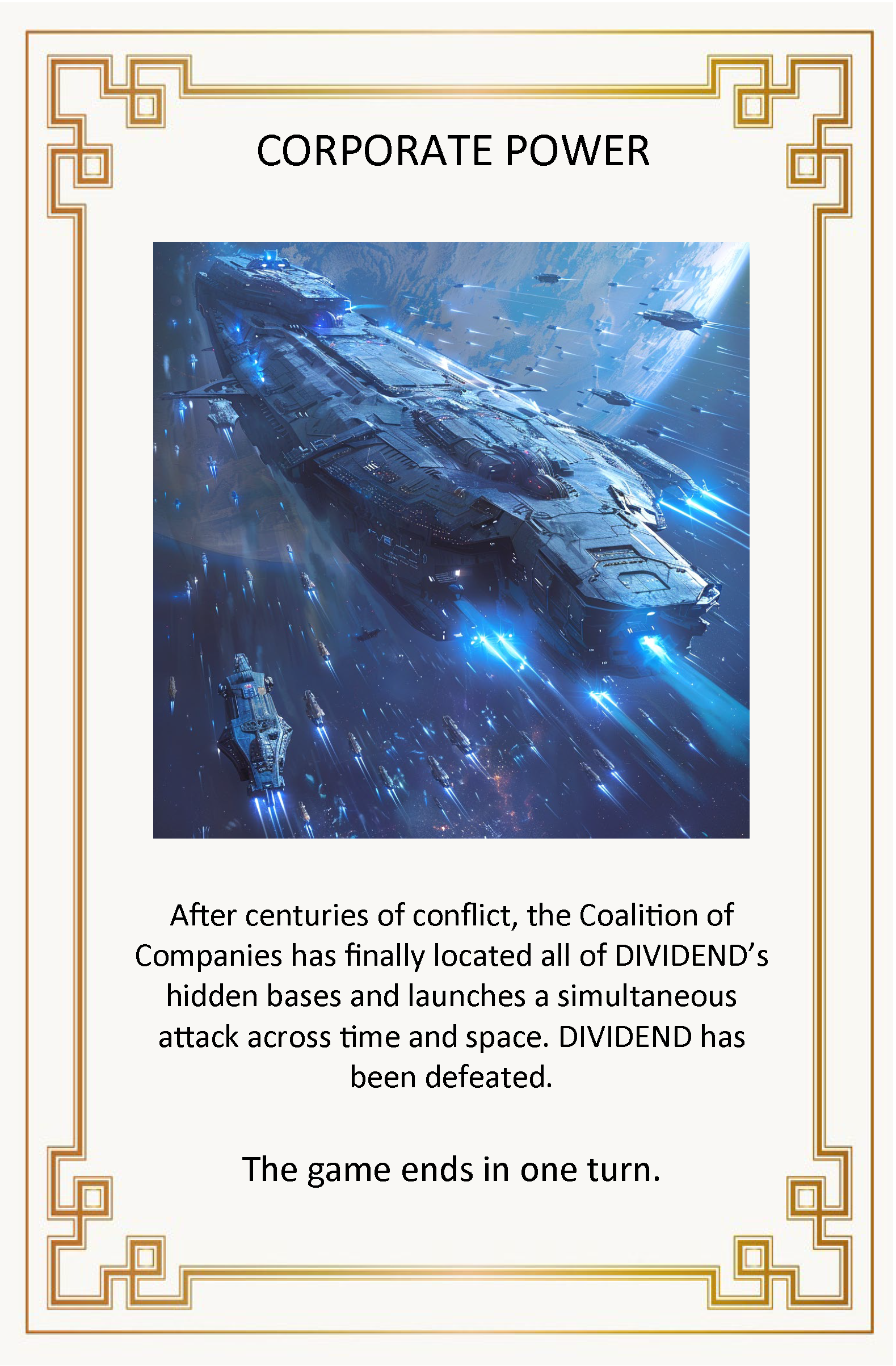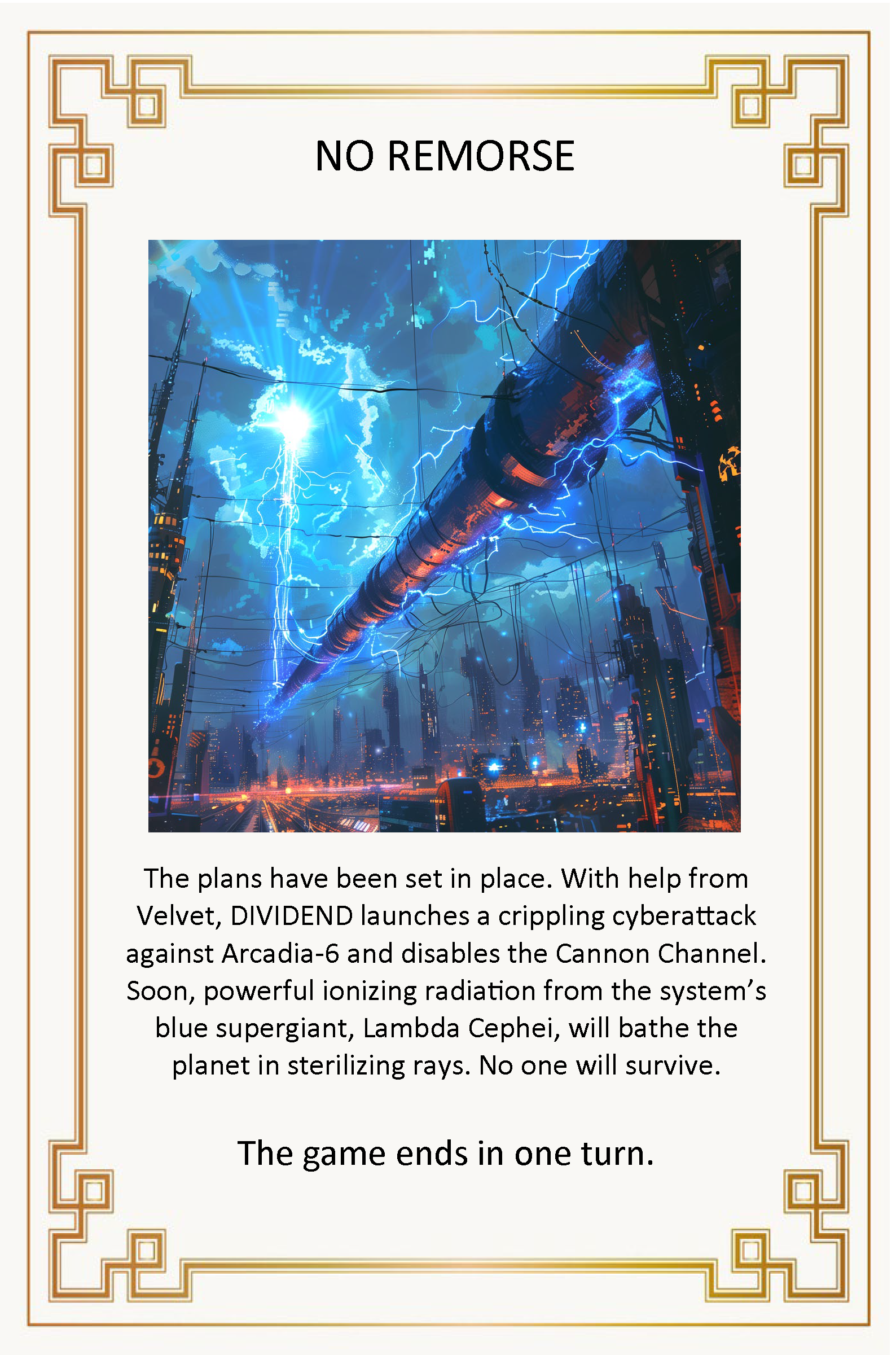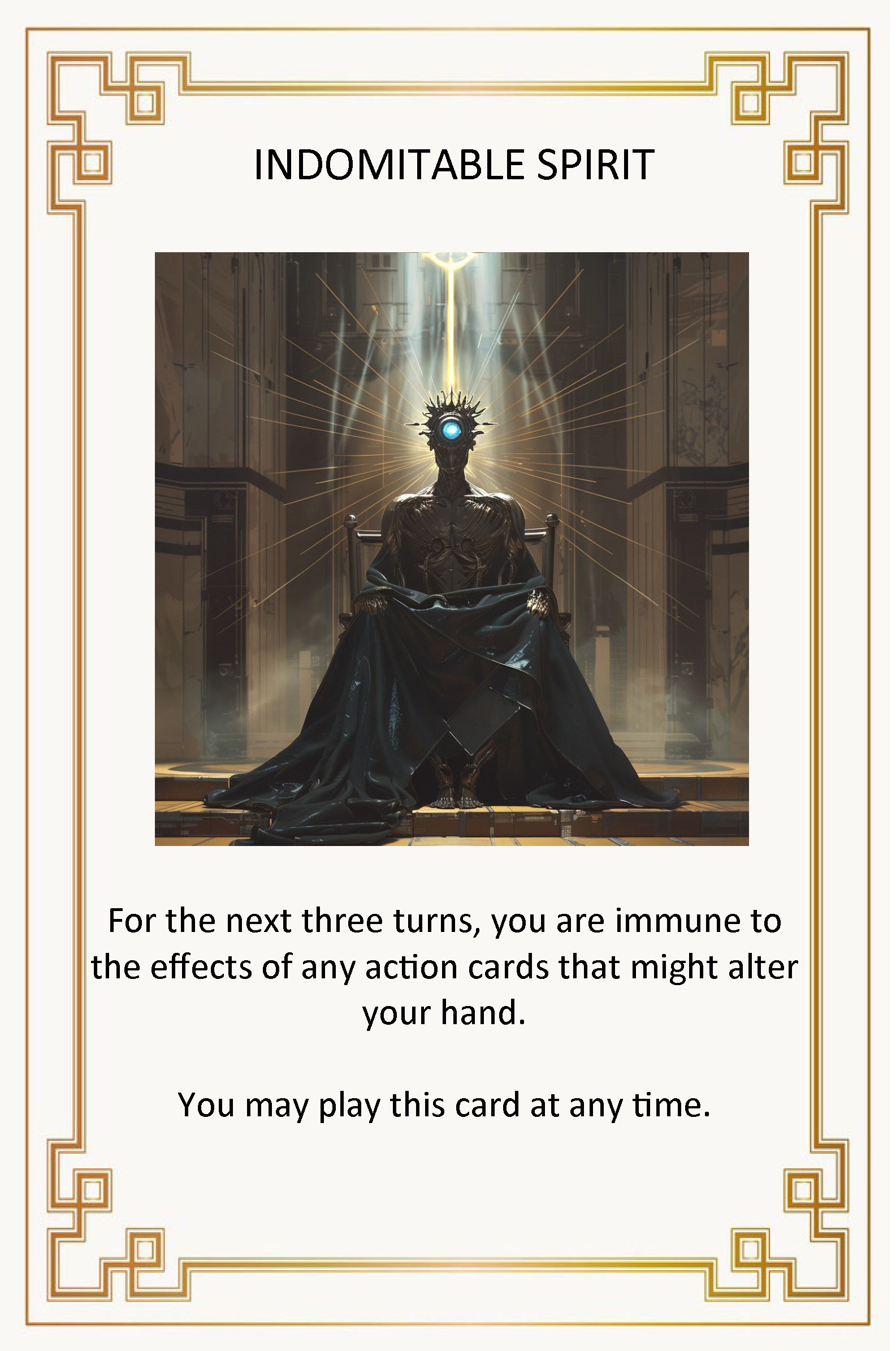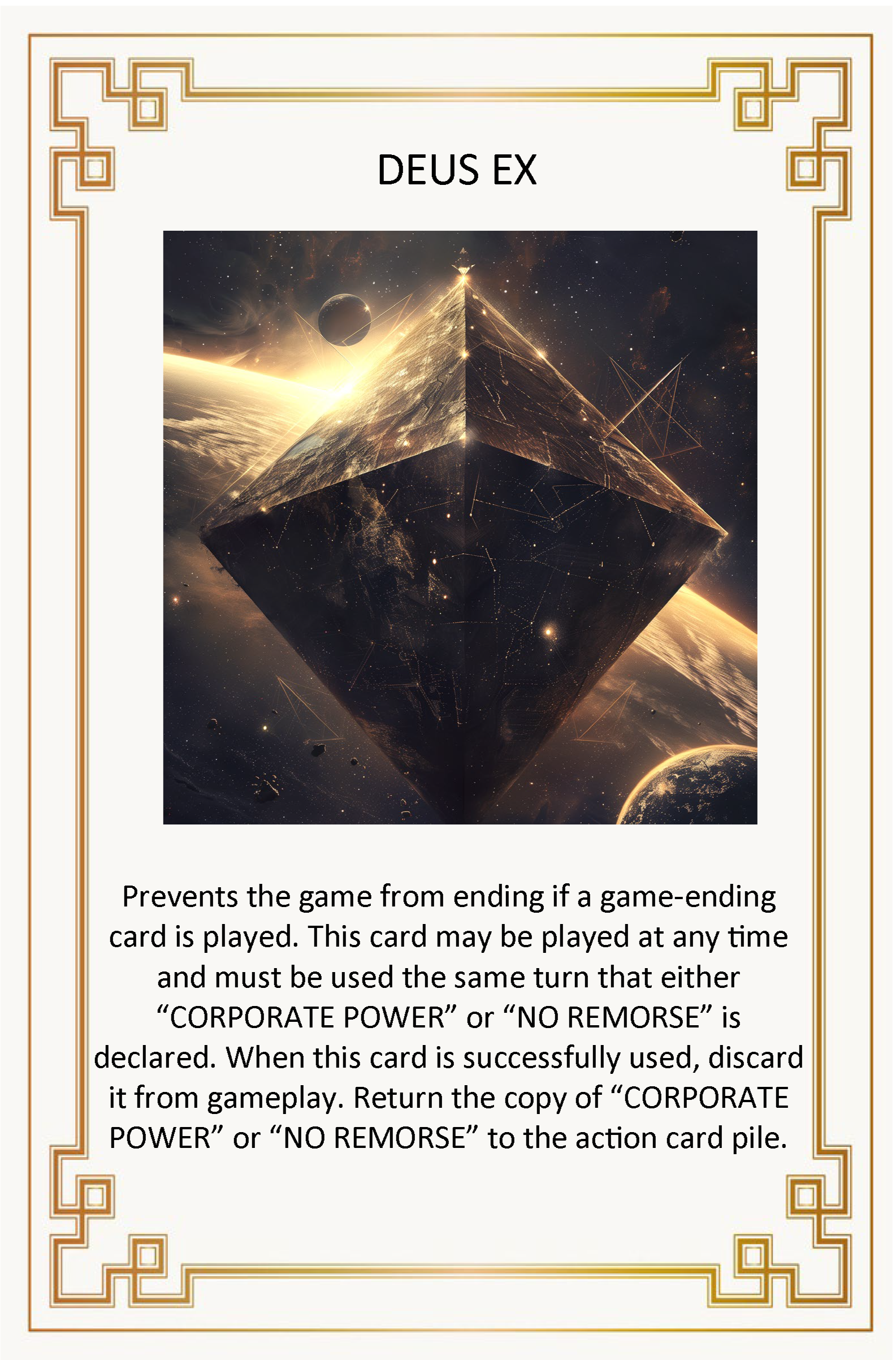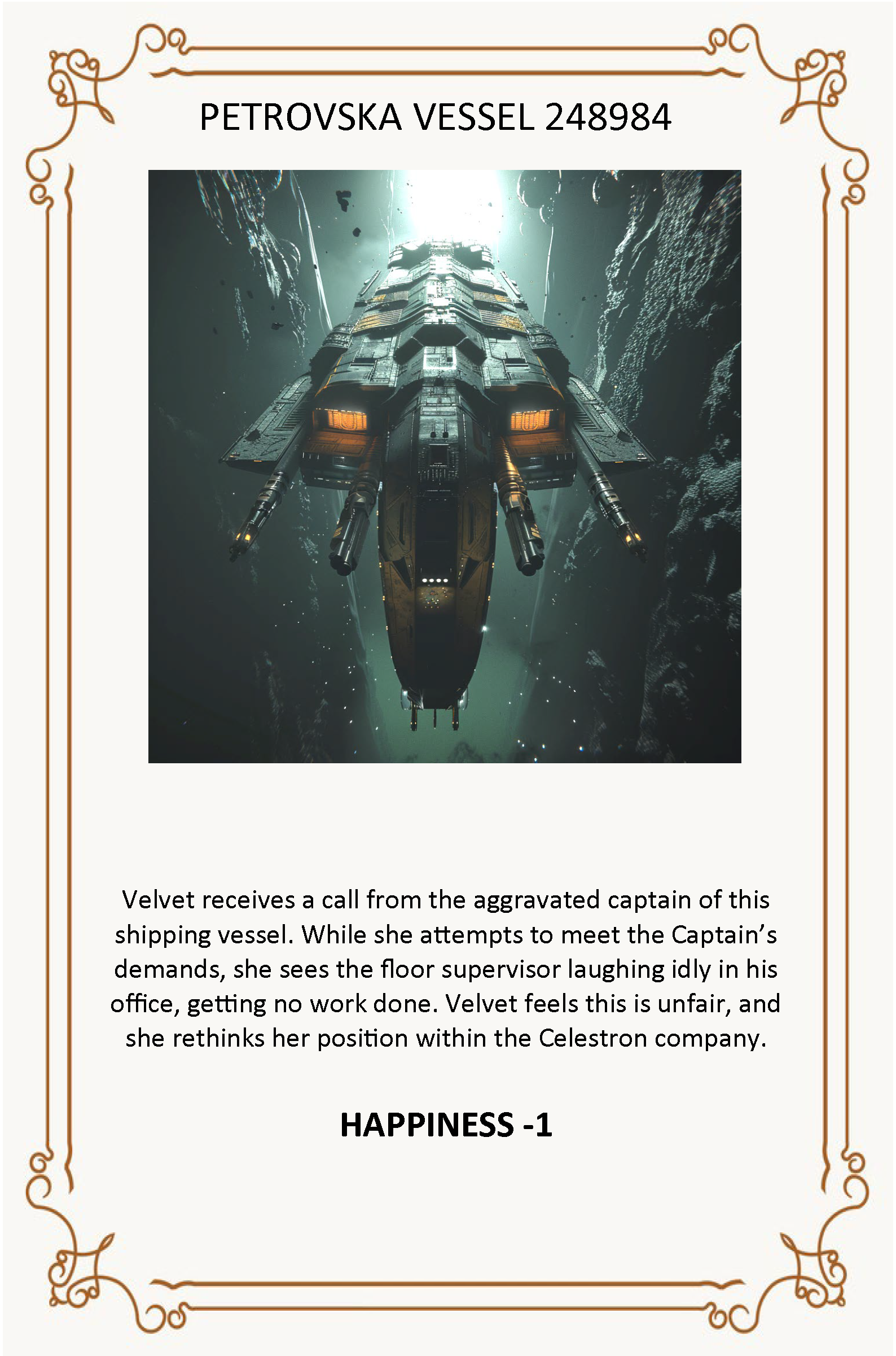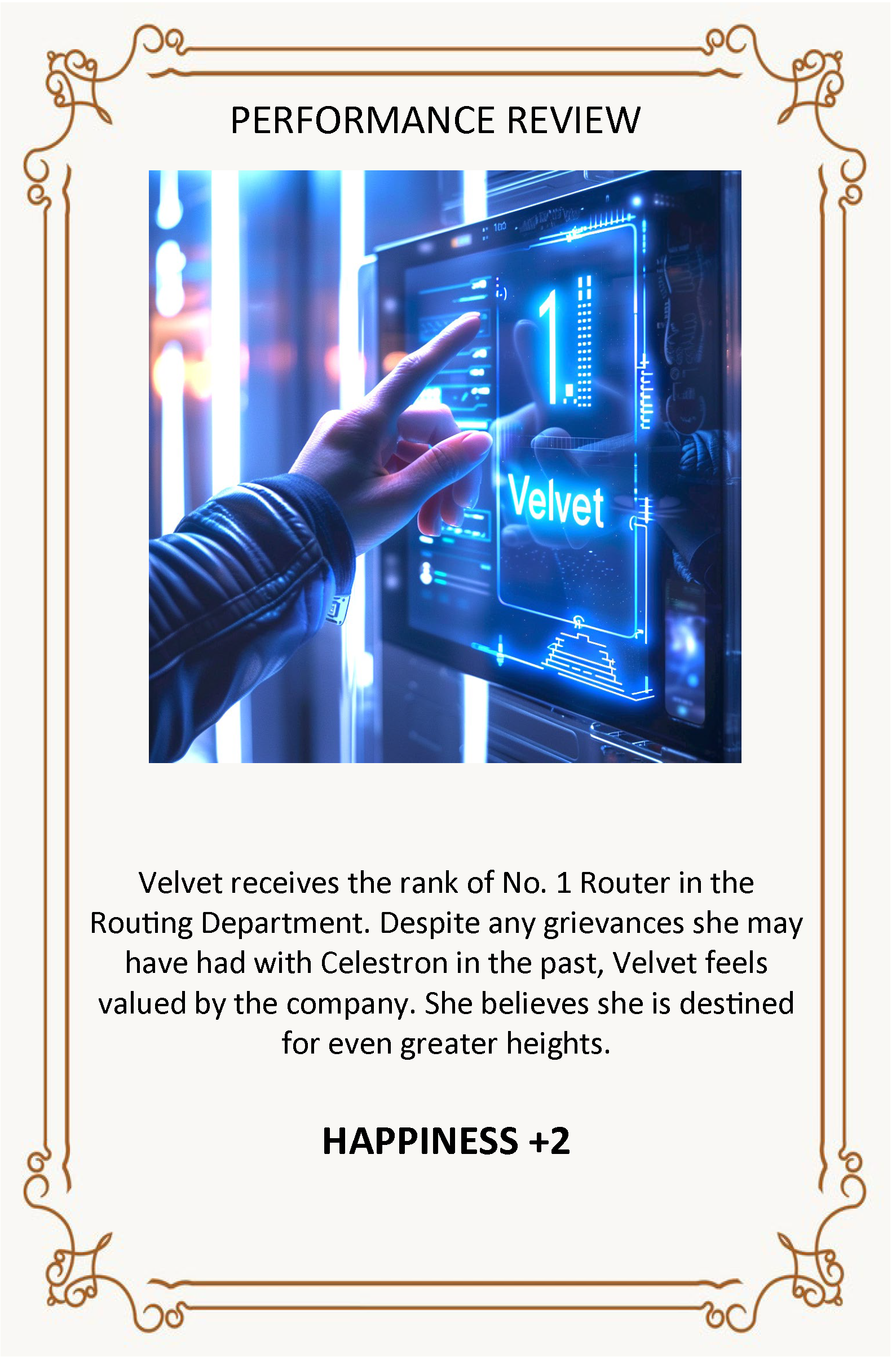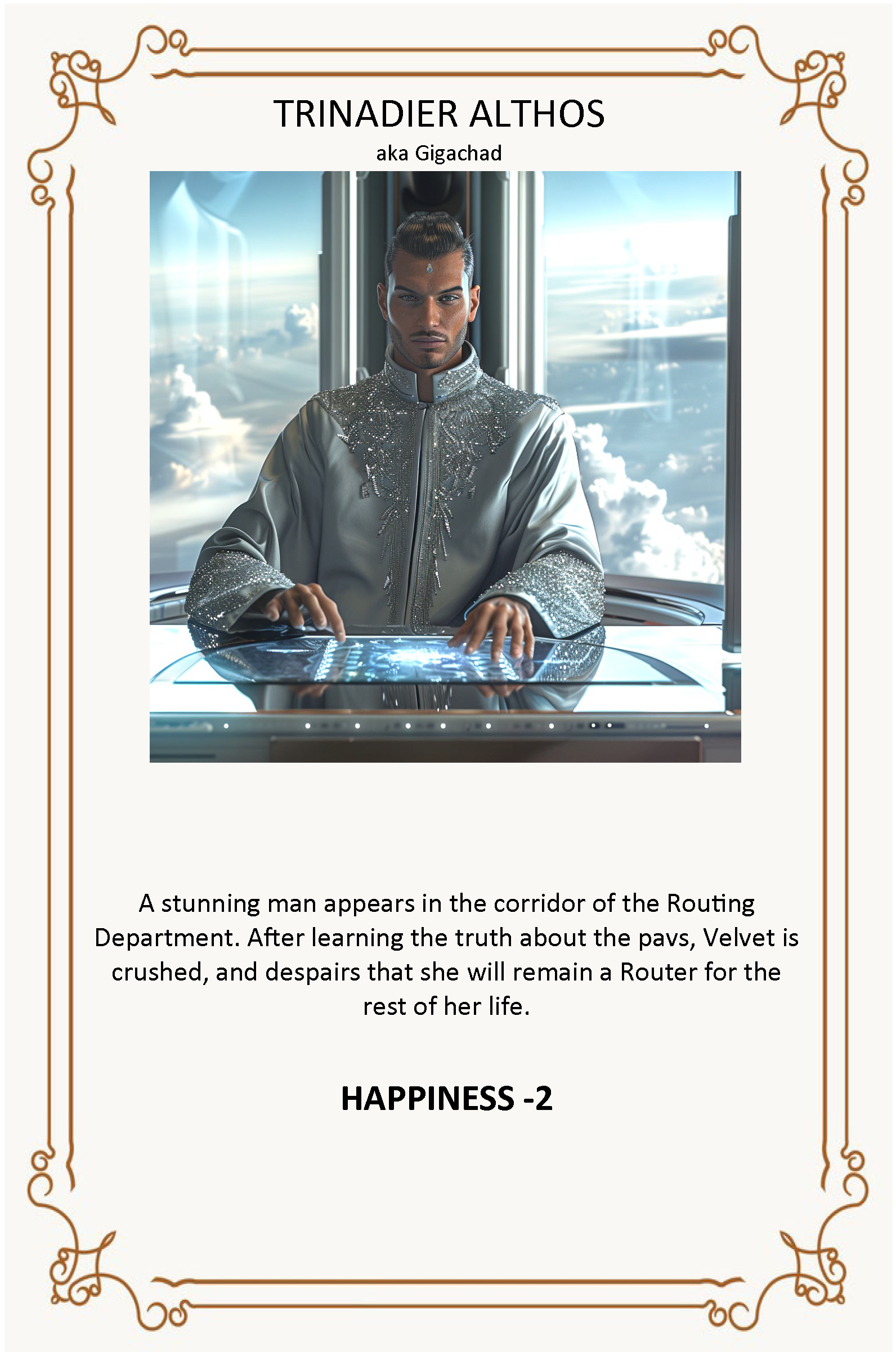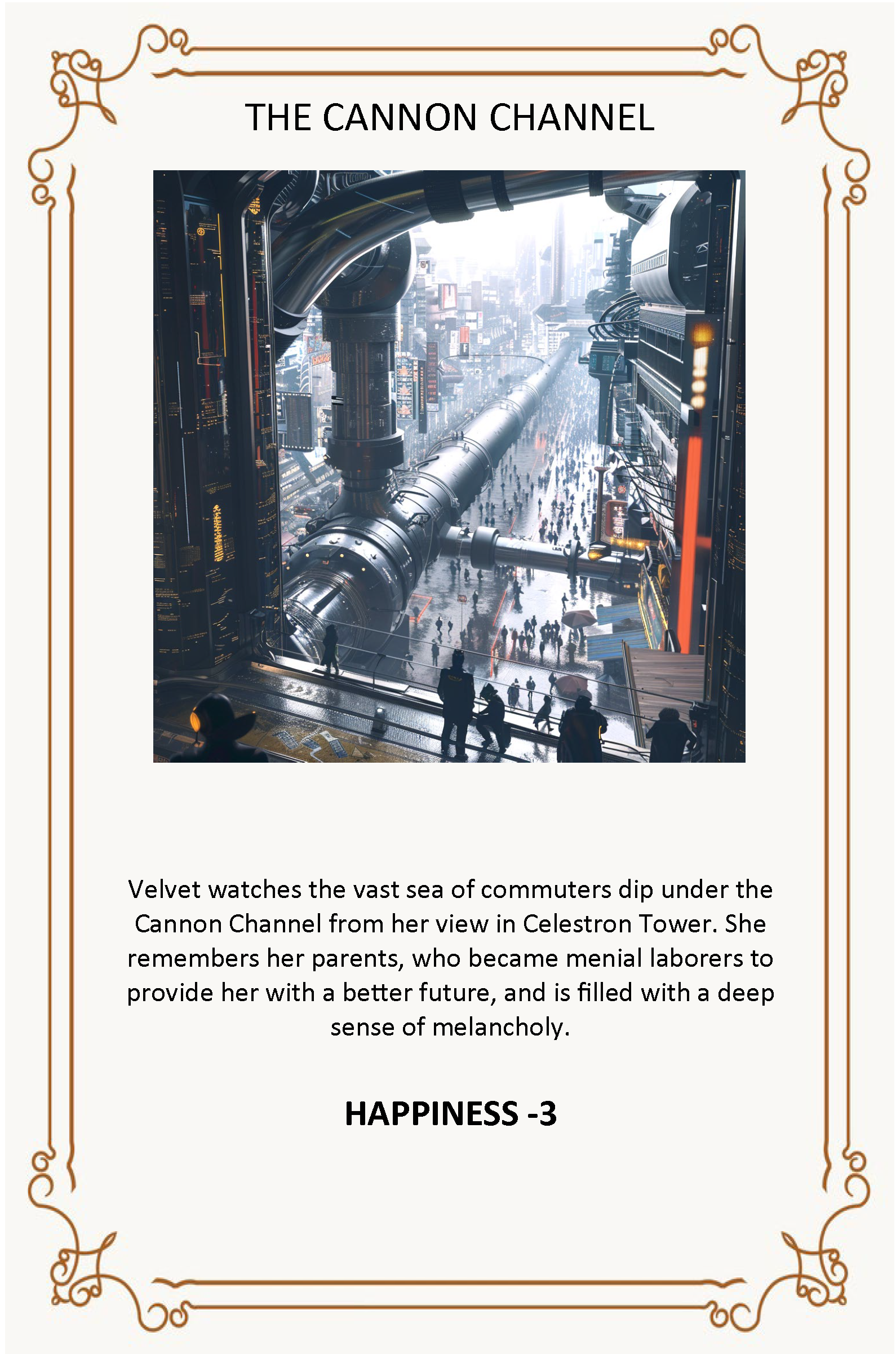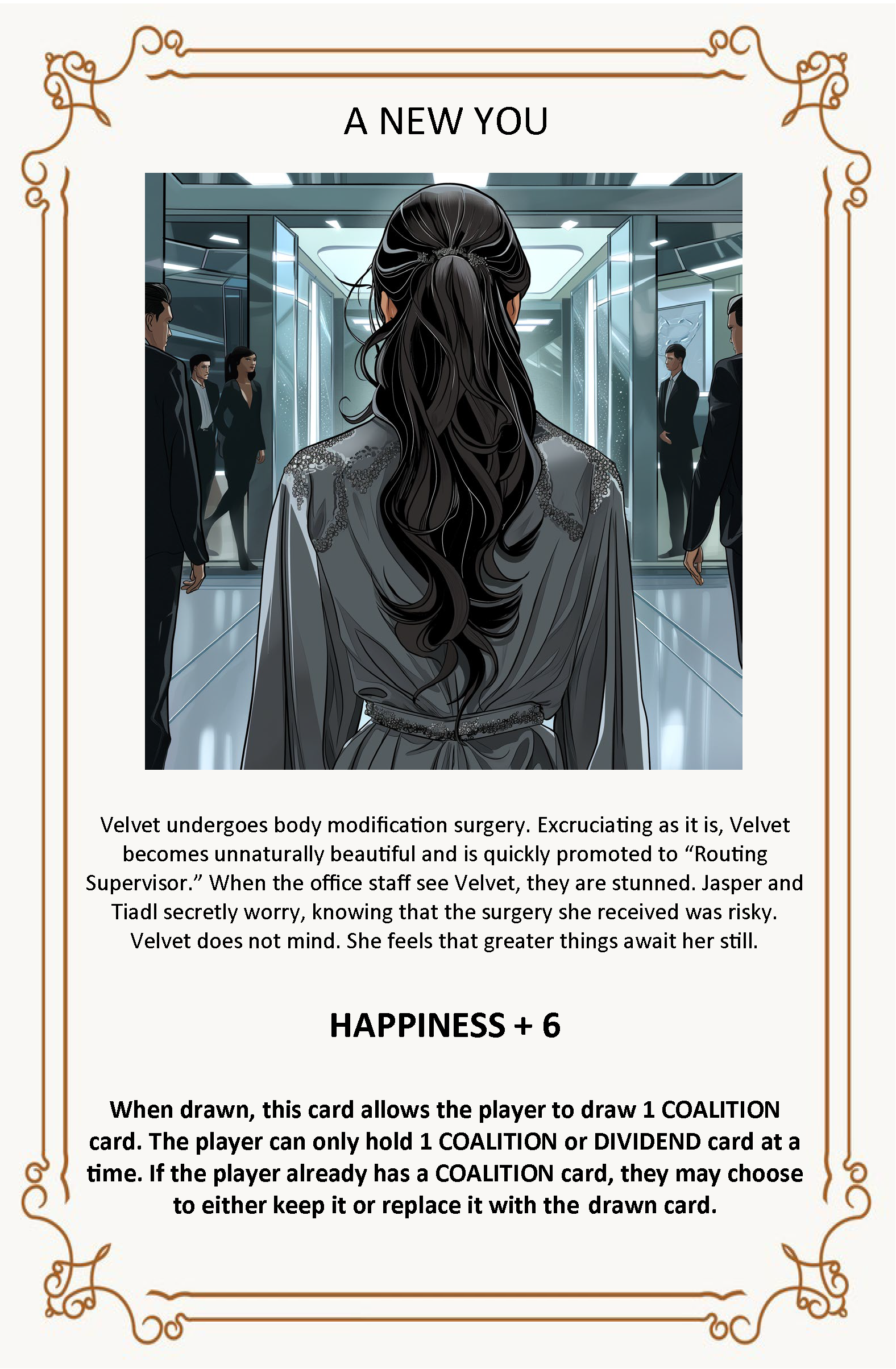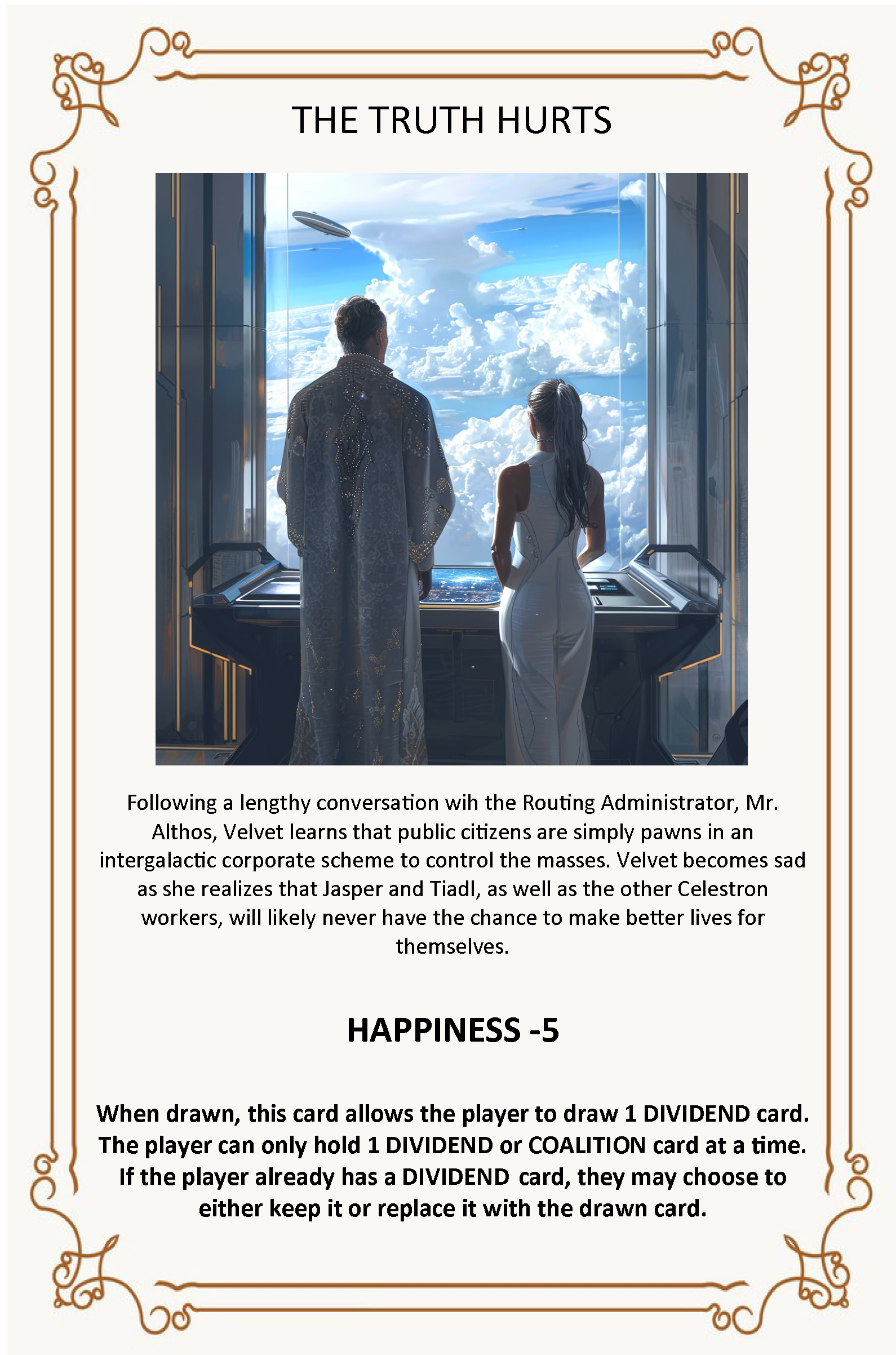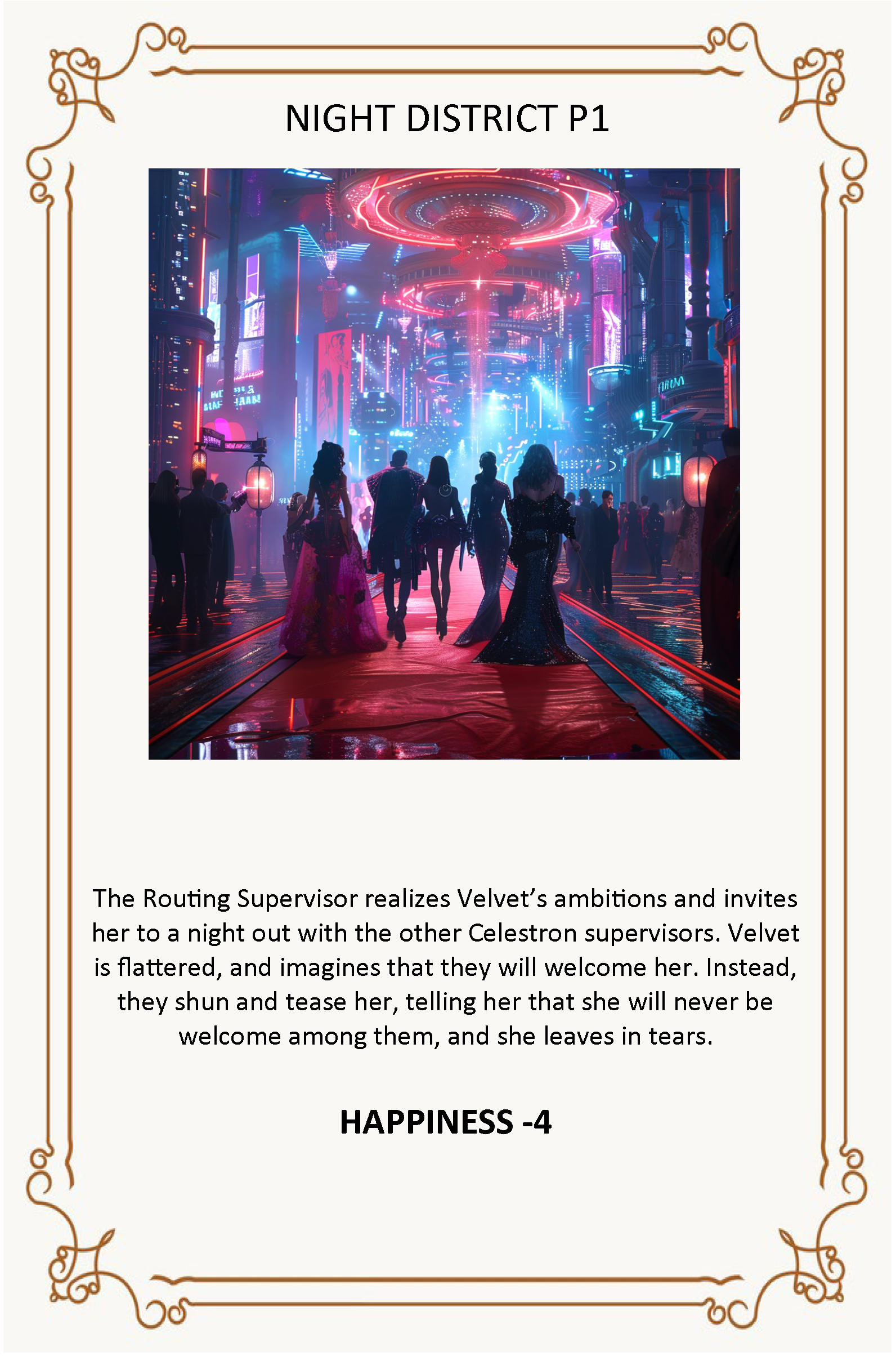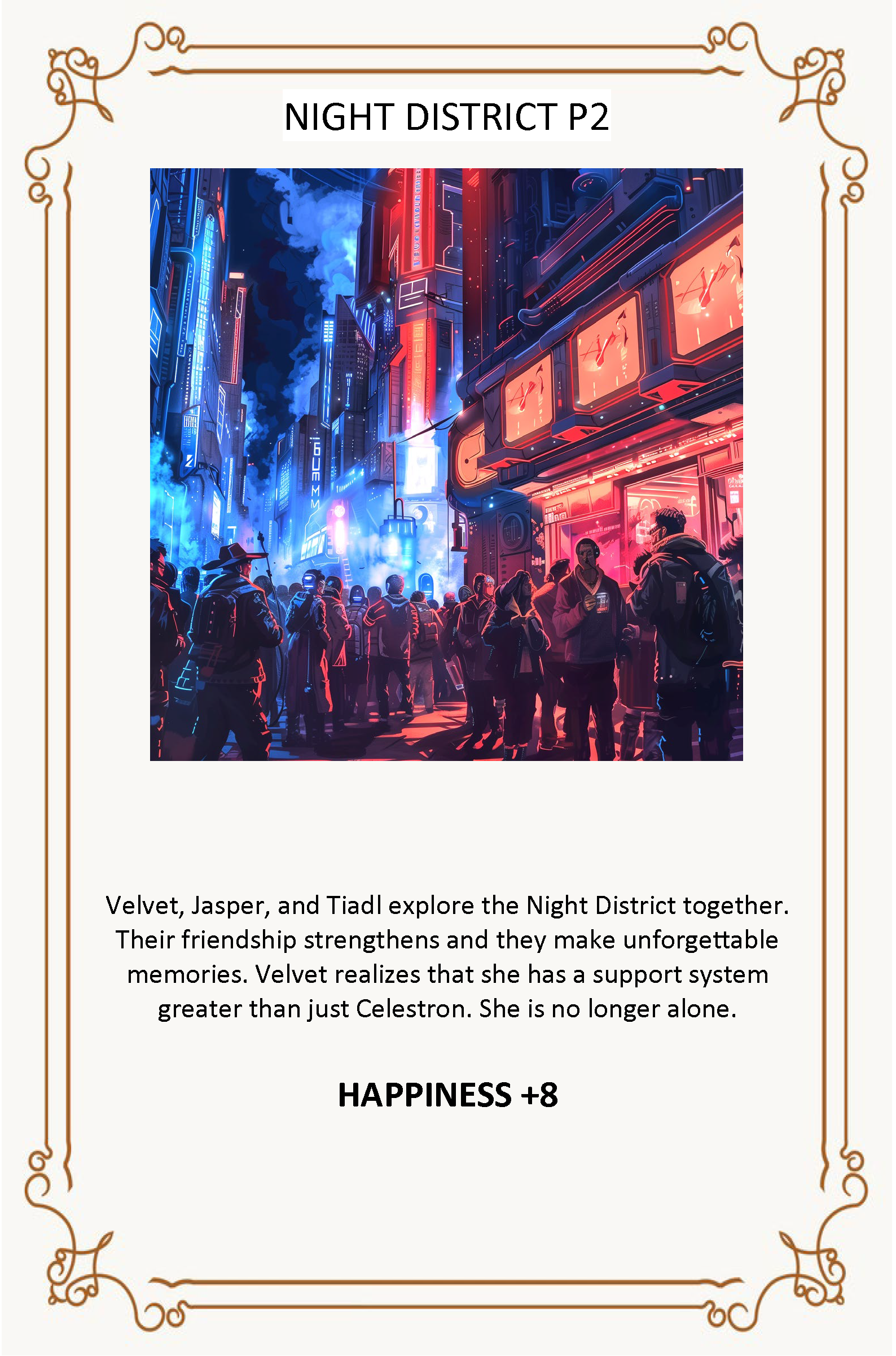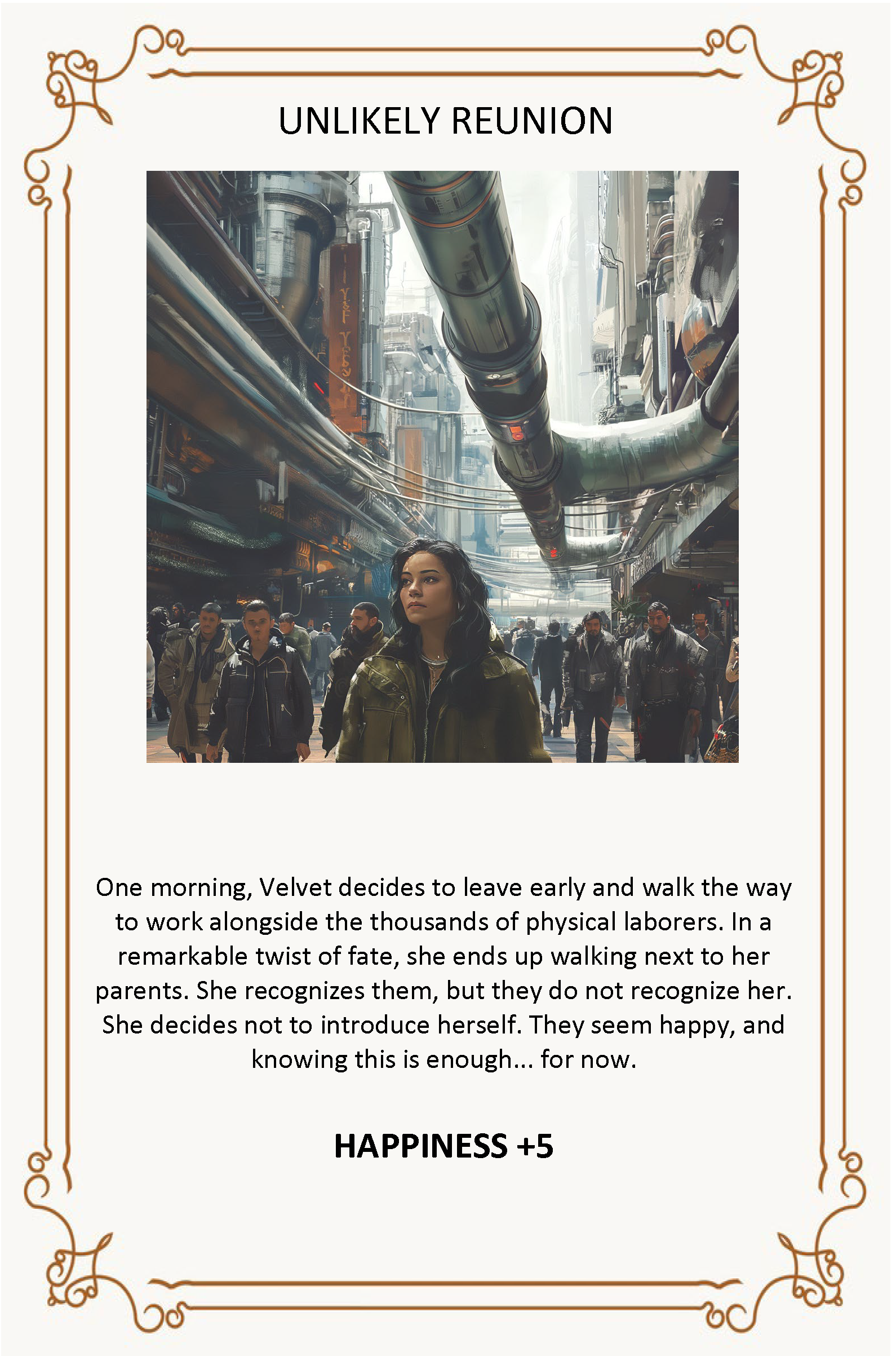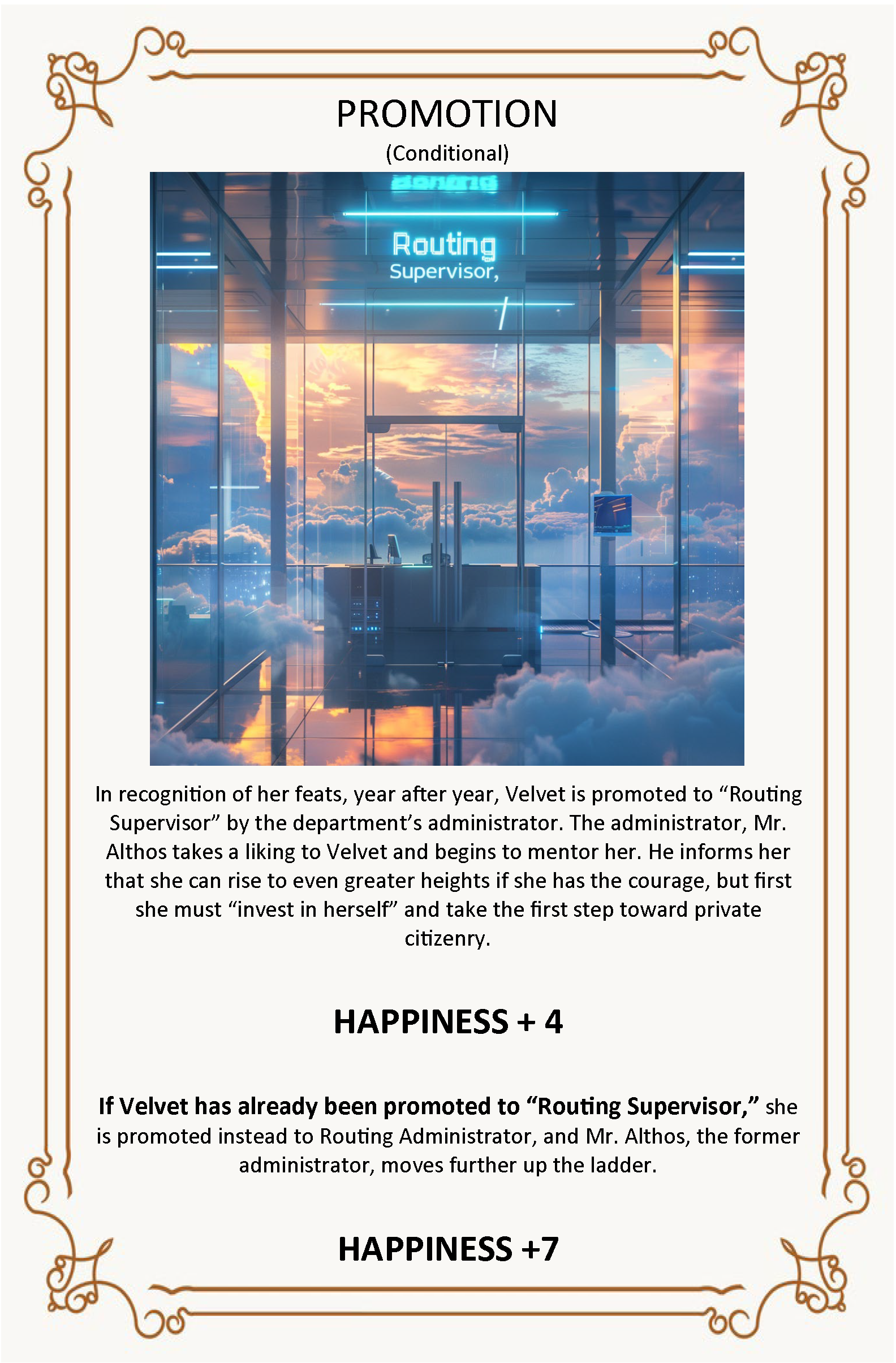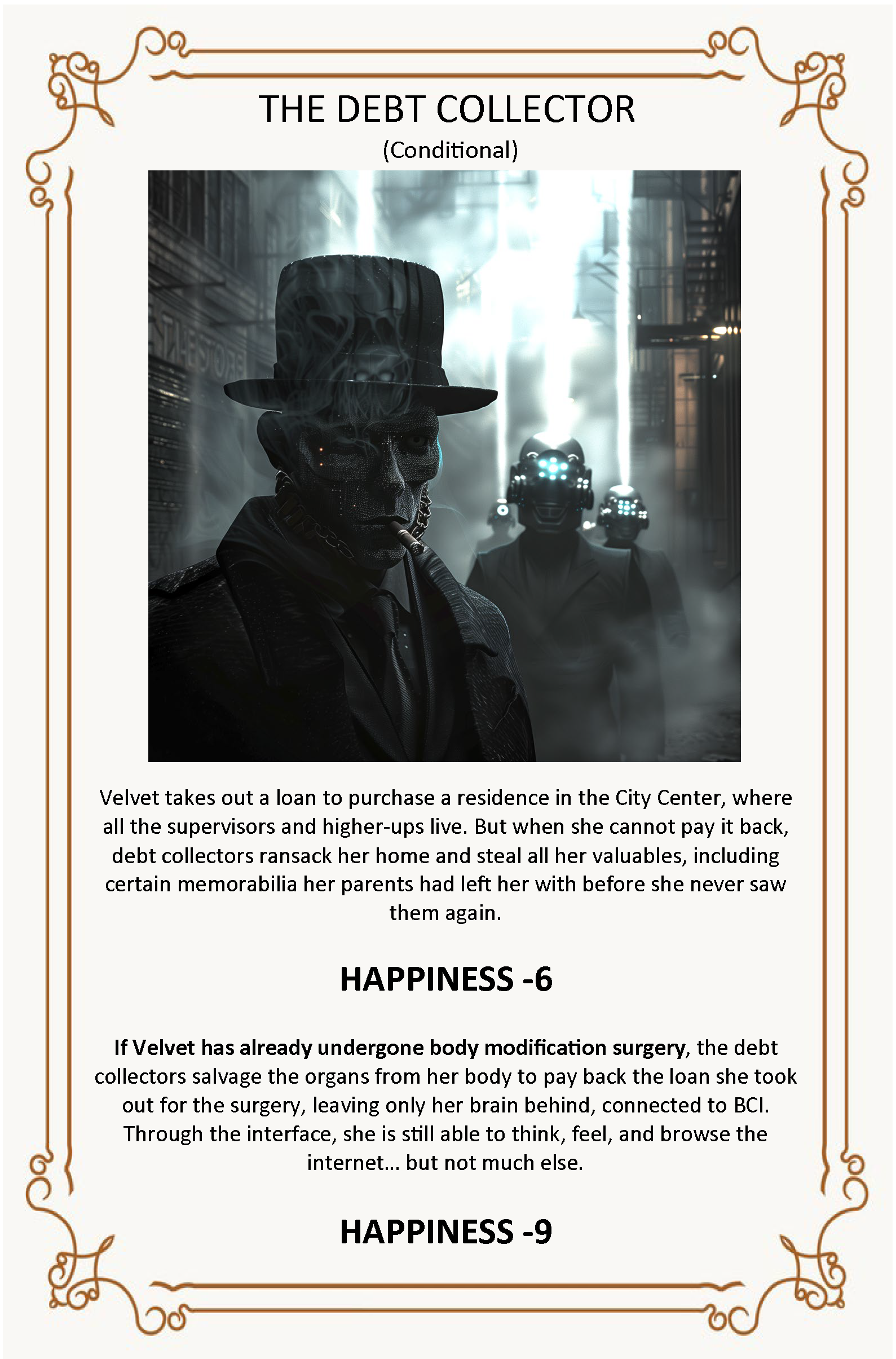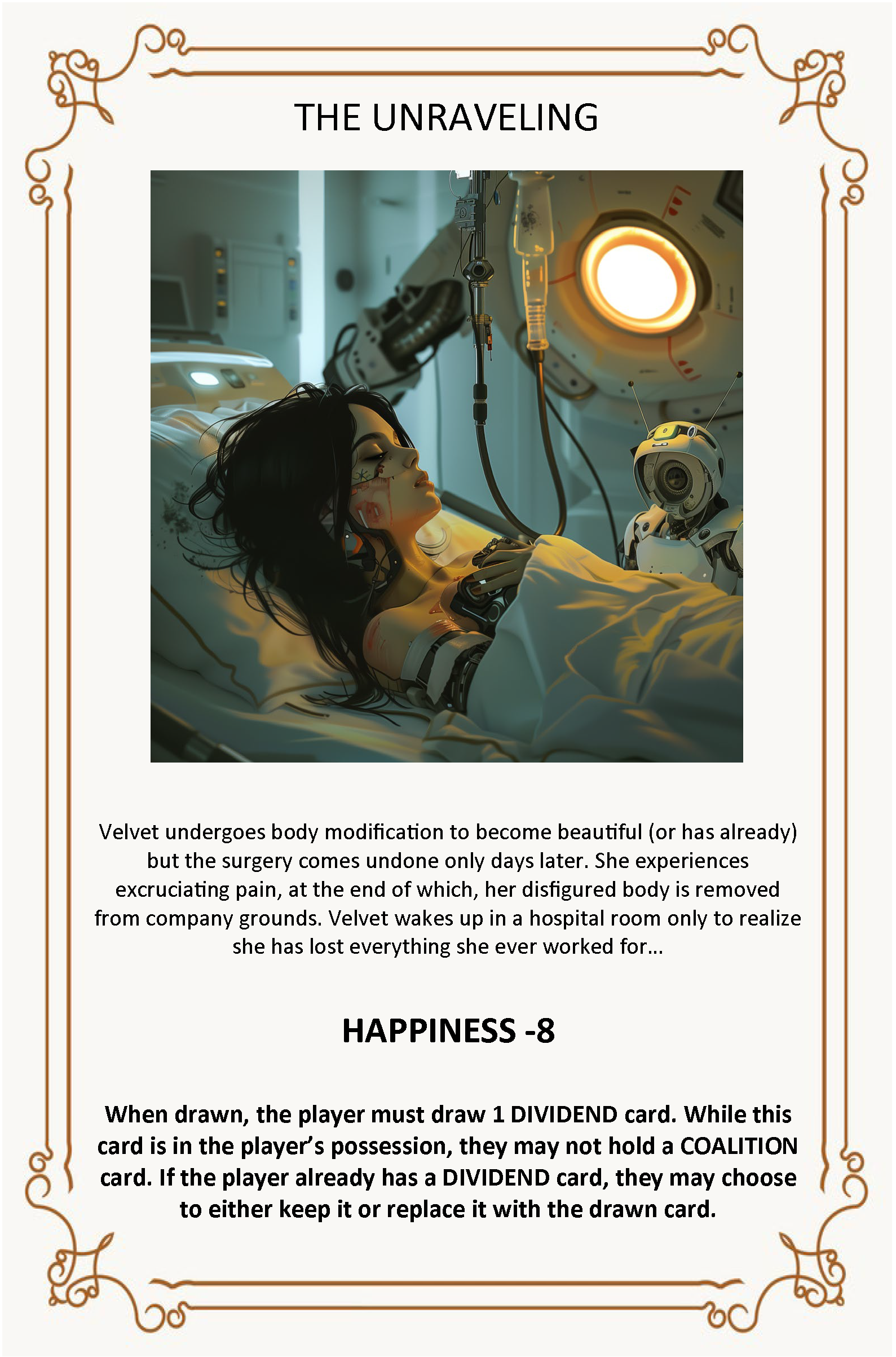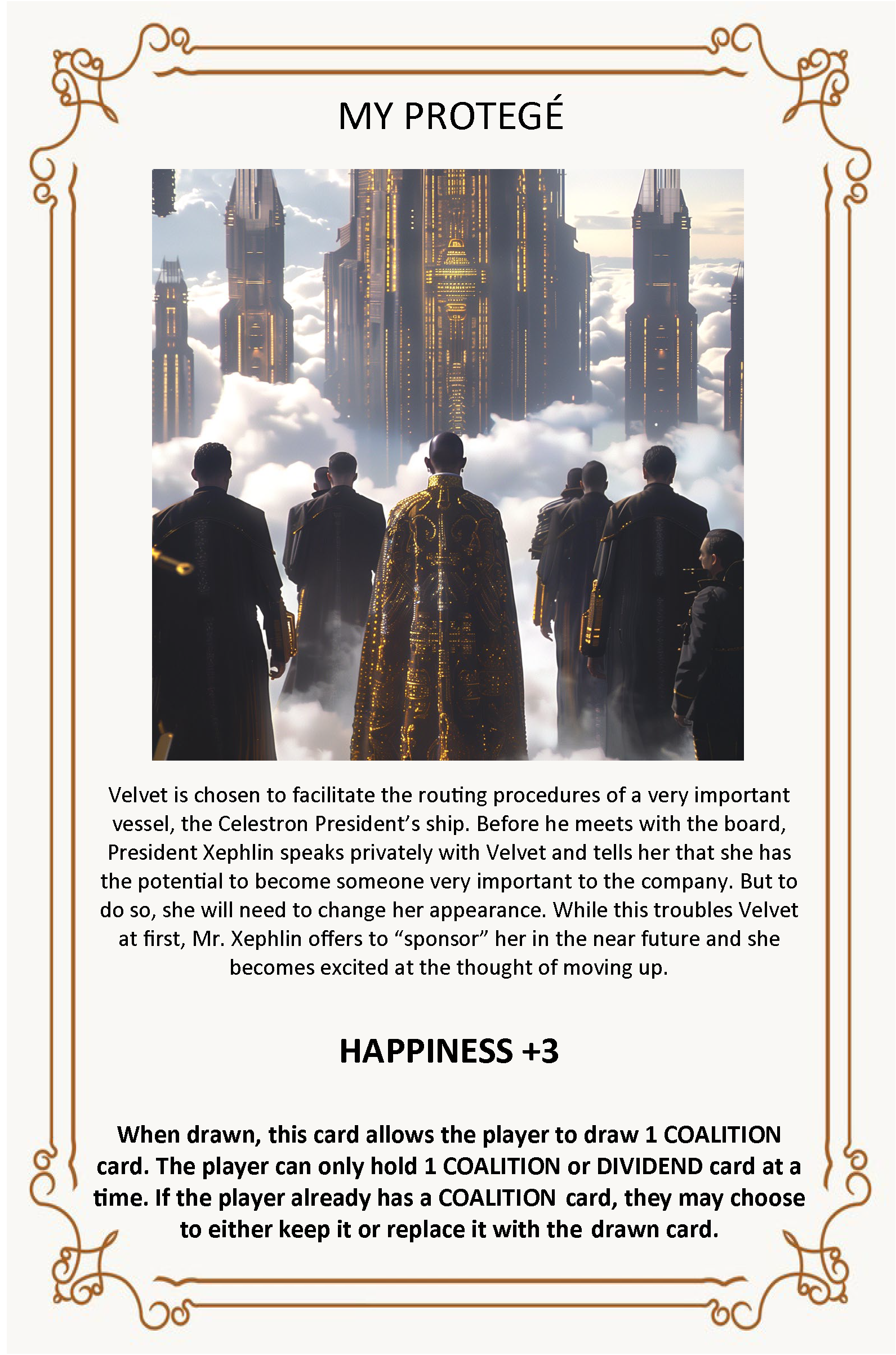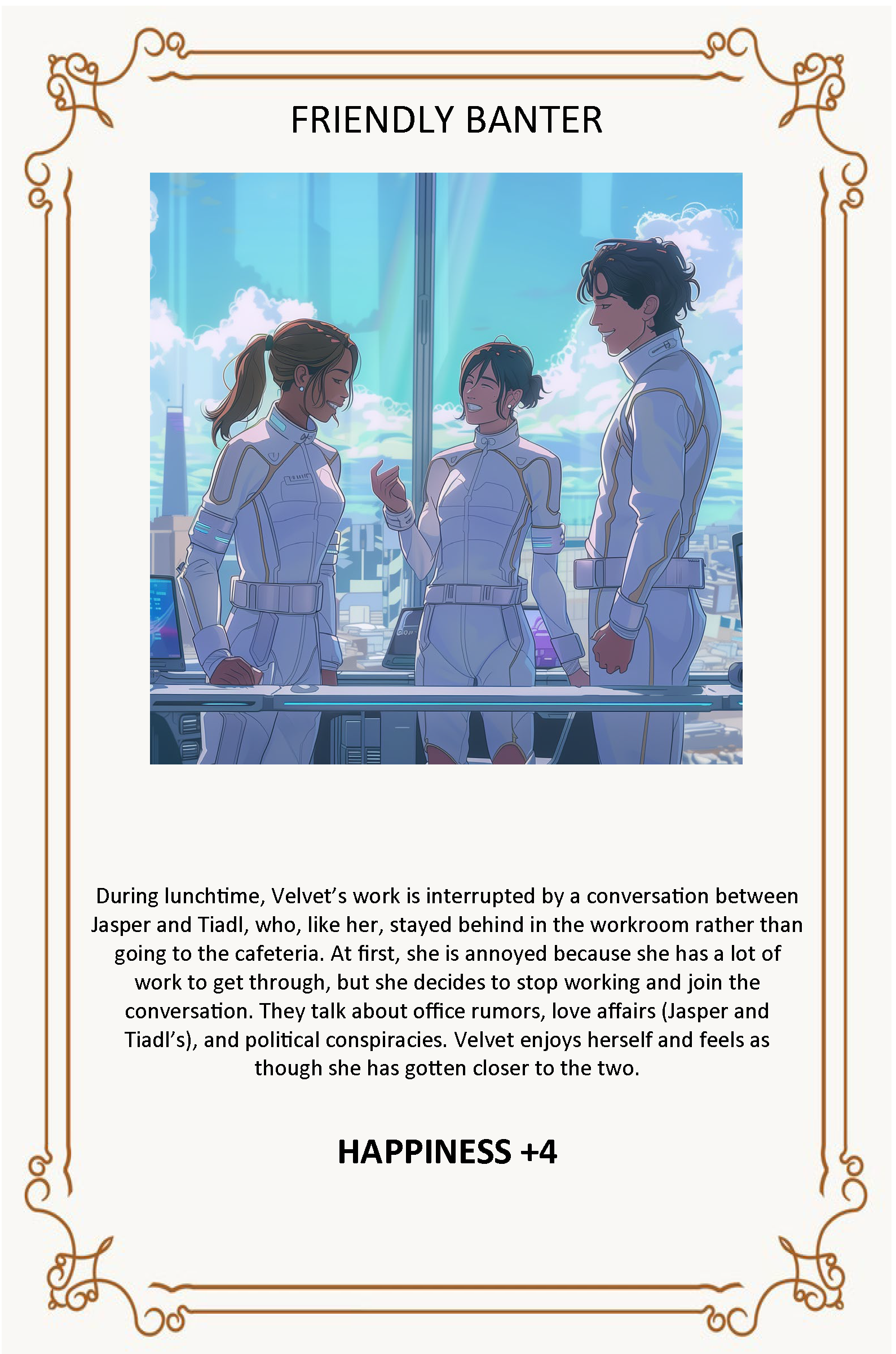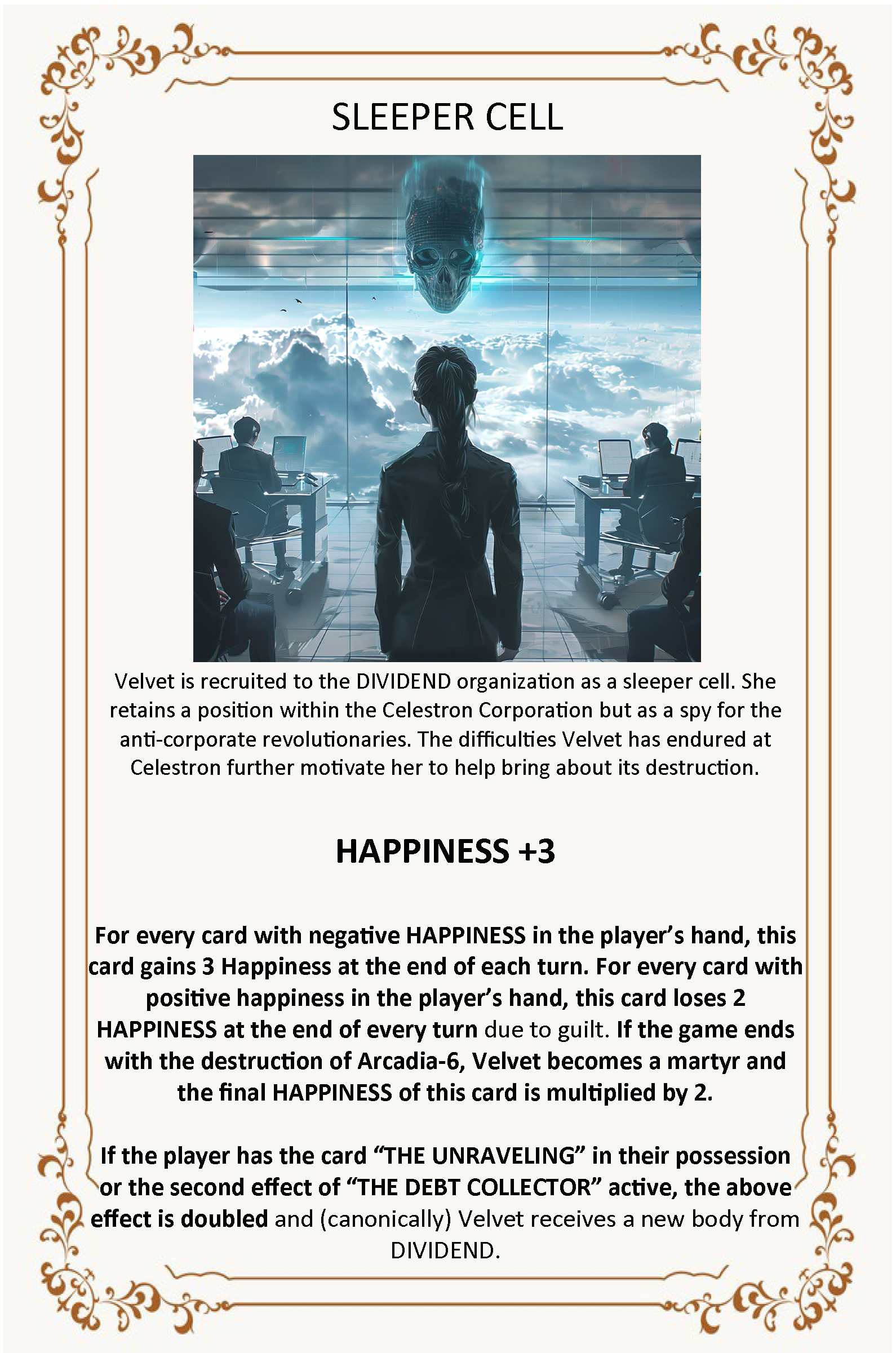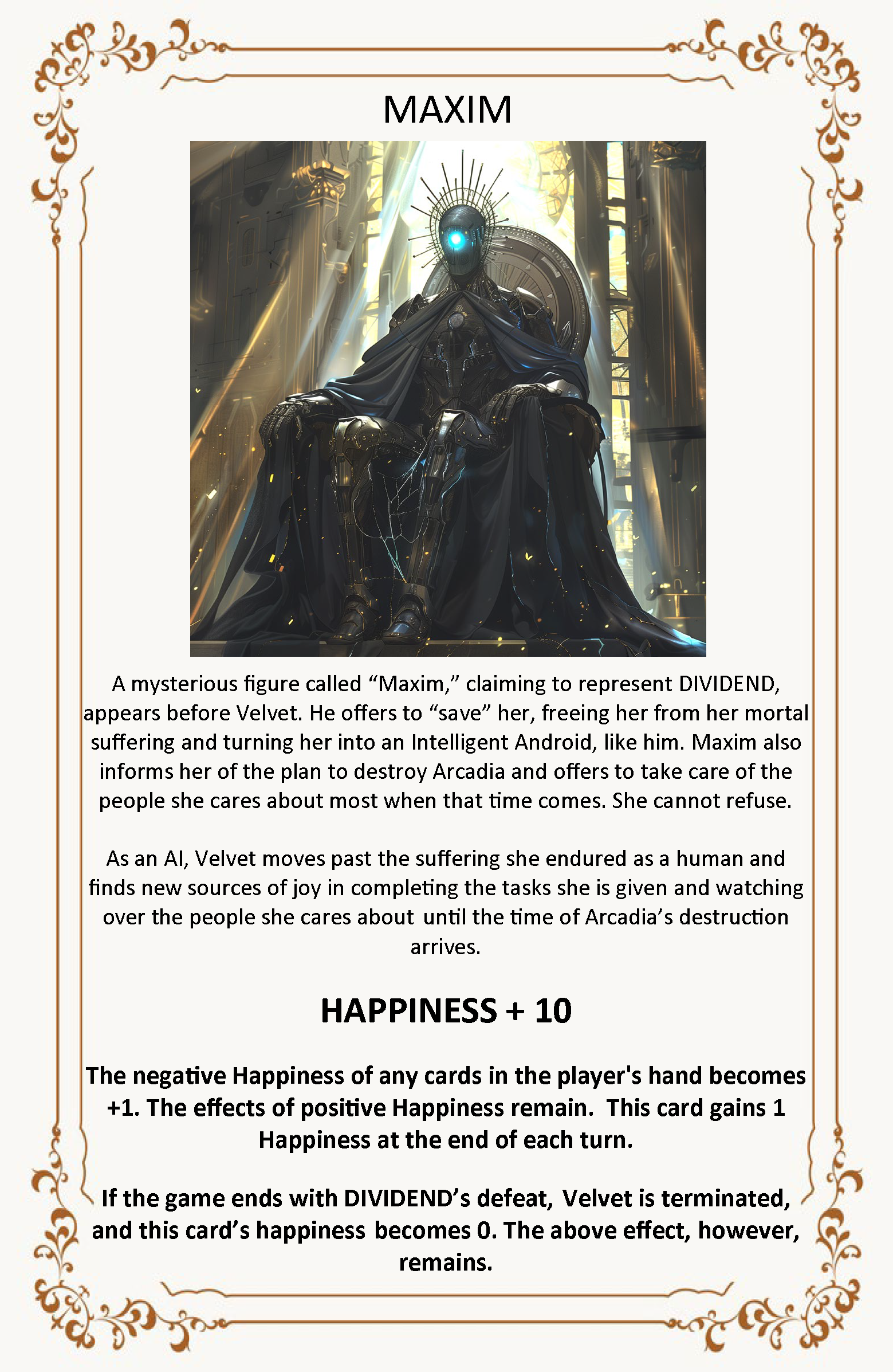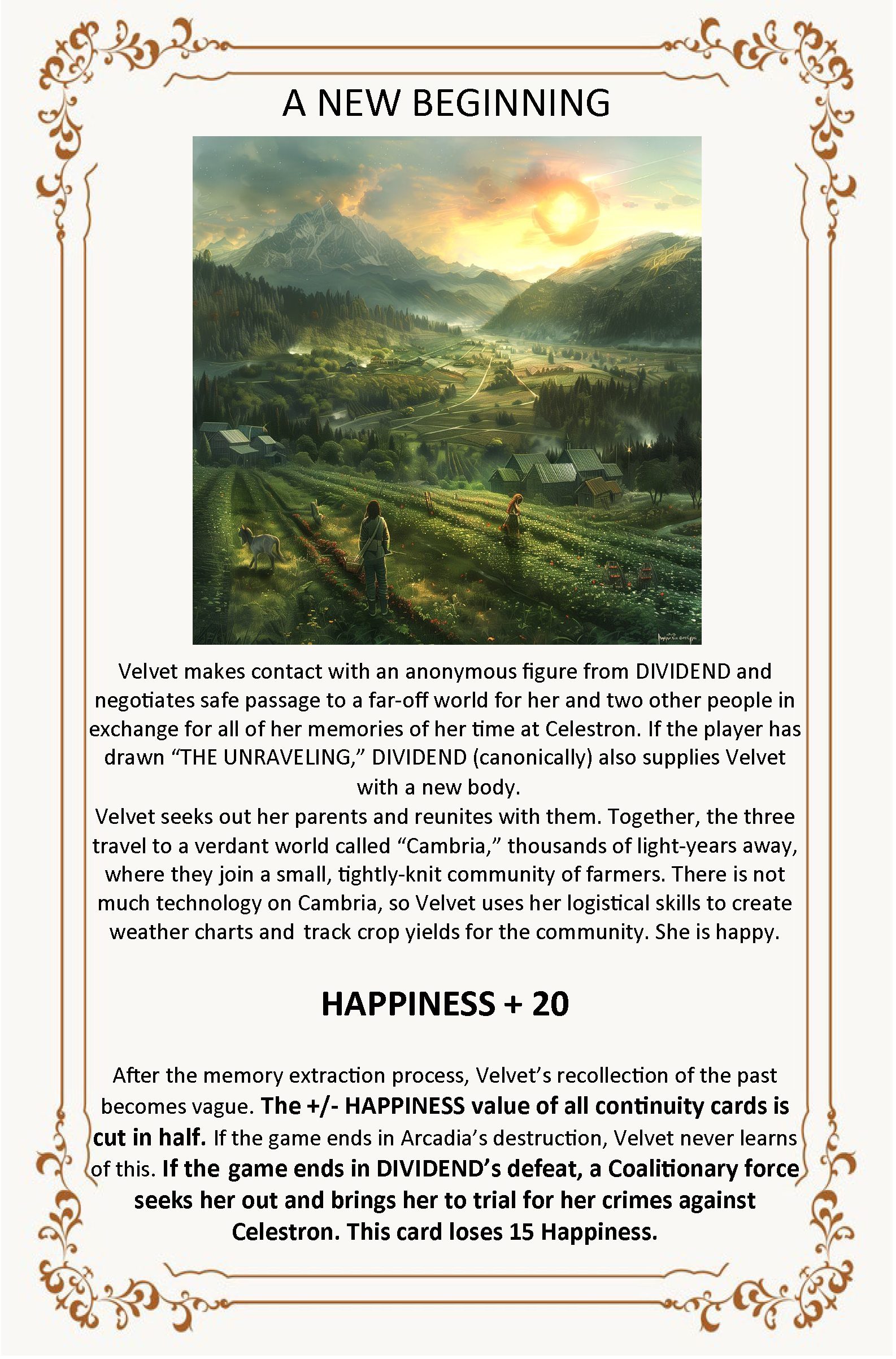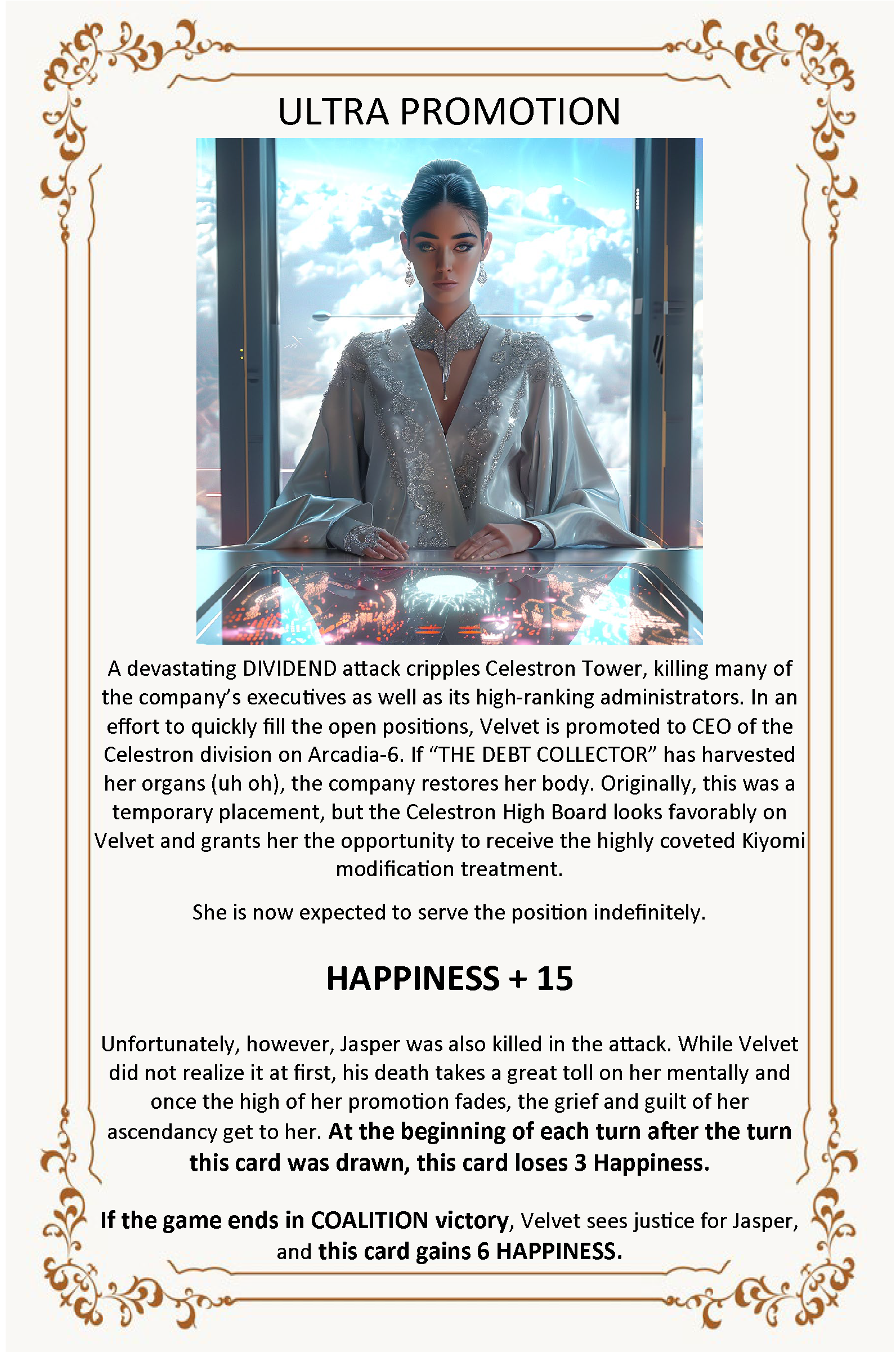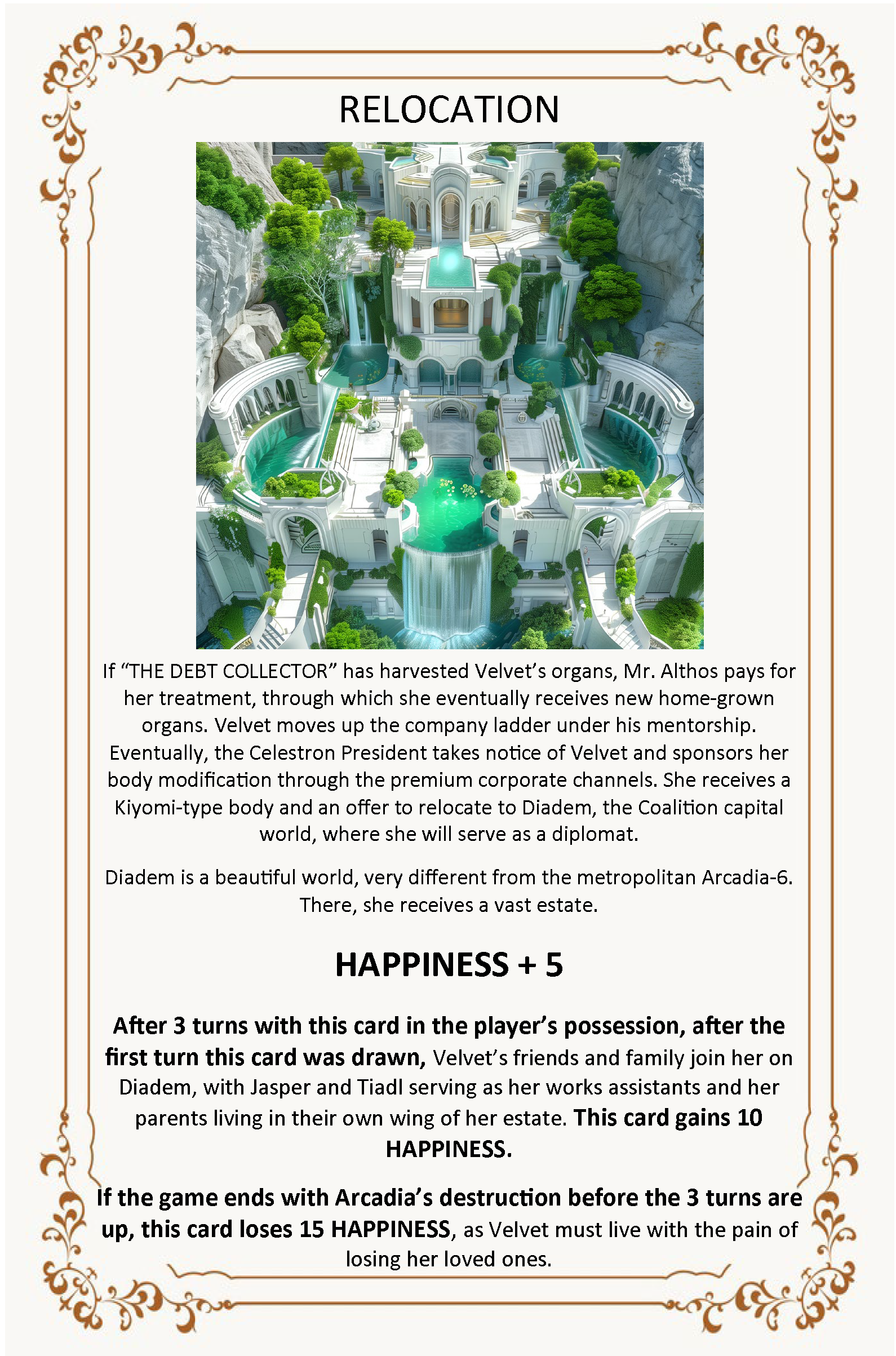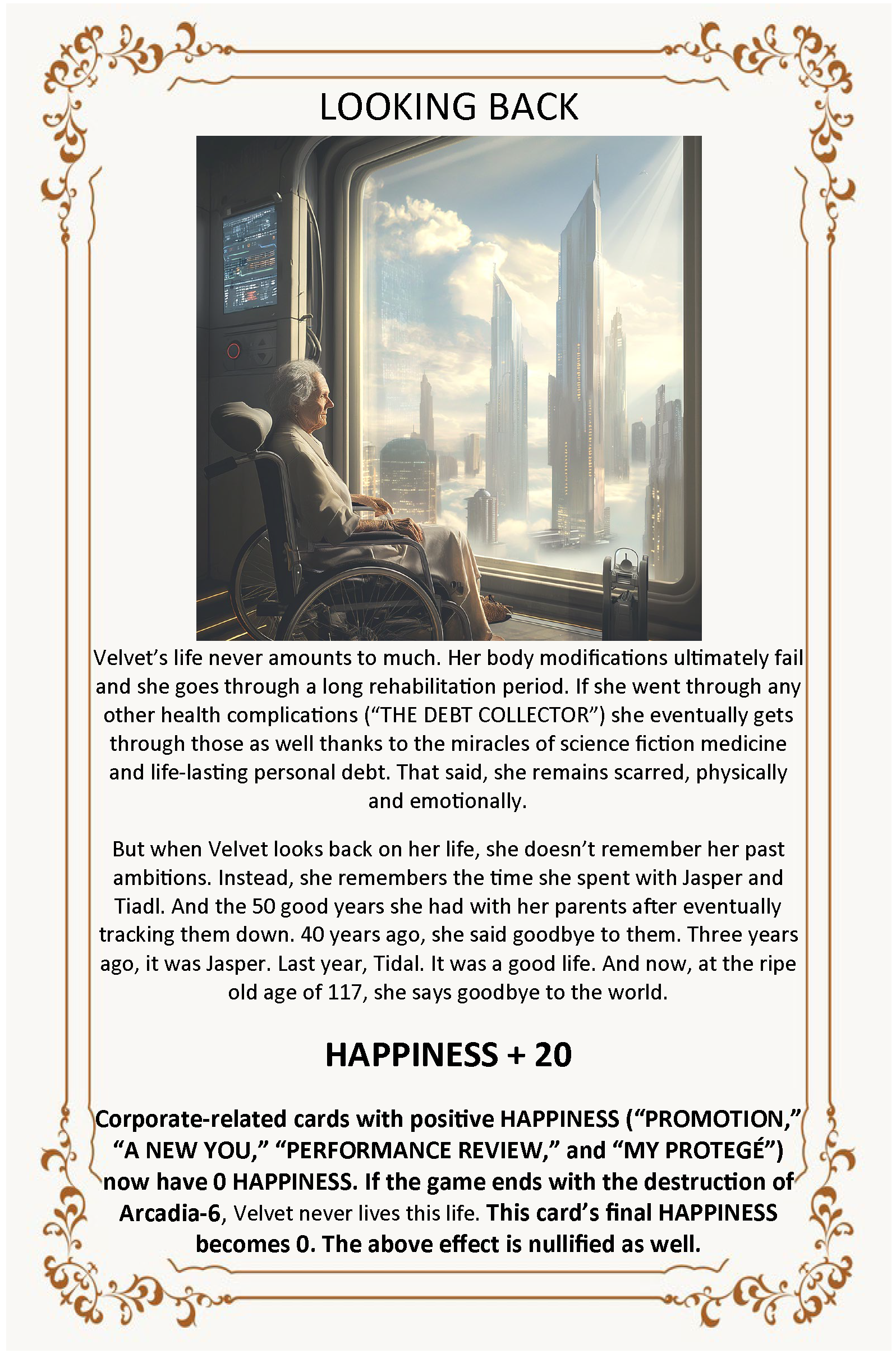How You Come Undone,
The Game
4-Player
Card Game
May 2024 | Creator
ABOUT
How You Come Undone, The Game is a fast-paced, competitive card game combining elements from Exploding Kittens and Yu-Gi-Oh!, based on the short story, “How You Come Undone.”
Each card tells part of the protagonist, Velvet’s, story as she struggles to find happiness in a dystopian, sci-fi world.
In How You Come Undone, The Game, each player draws cards to create a hand that maximizes Velvet’s happiness while simultaneously interfering with other players’ hands.
Use Action Cards to sabotage other players or steal their cards and draw Faction Cards to declare Velvet’s allegiance to either the corporations she works for or the mysterious shadow organization, ‘Dividend.’
When the game ends, either by Corporate victory or defeat, the player with the happiest Velvet wins!
But beware, the cards you play will cause the world, and Velvet’s life, to change unexpectedly.
Player Experience Goals
1. To make players invested in Velvet’s story and
2. To create a pervading sense of danger and excitement through mutual card interference and deception.
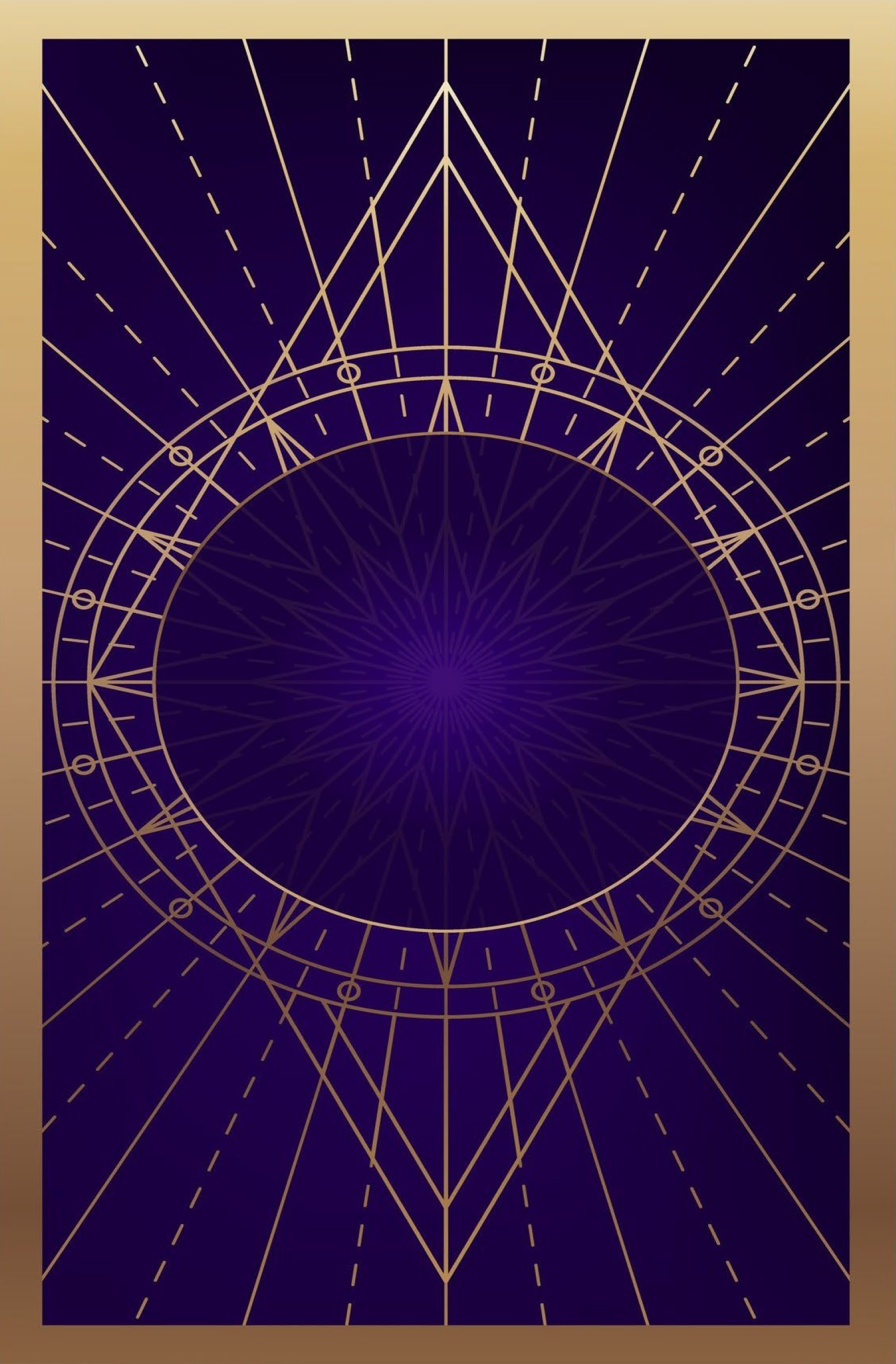
Design Process & Challenges
I knew I wanted the game to feel like a TCG but play like a fast-paced group game. This philosophy influenced the design process in three main ways.
First, the cards needed to contain a lot of information but communicate what was most relevant to gameplay clearly and concisely to keep gameplay flowing.
Second, I wanted player-player interference to play a major role in the game, which informed the creation of “Action Cards” meant to be used often, yet strategically.
Third, I wanted to encourage deception and secrecy, so I decided on hand-based gameplay as opposed to a more TCG-inspired tabletop style.
The two main challenges I faced were 1) balancing the amount of card text that players felt comfortable reading, and 2) balancing the amount of Action Cards that players could collect and use each turn.
Due to the time constraint of having two weeks to complete the project, I decided to skip the prototyping and playtesting phase.
I also relied on generative AI to create the card art. For a list of all prompts used, please see below.
Post-
Mortem
Much of the positive feedback from players was that they were invested in the world and felt that the strategy-oriented gameplay was engaging.
However, there were a few issues that arose during play sessions .
First, players with little-to-no TCG experience expressed feeling overwhelmed by the amount of text on the cards, whereas players familiar with games like MTG or Yu-Gi-Oh! felt that the cards were fairly intuitive and easy to navigate.
The second issue was that gameplay sometimes stagnated as players often felt it was advantageous to hold Action Cards rather than use them, as they only received one every two turns.
With the modified rule that players received a new Action Card every turn, gameplay became more exciting but also a bit chaotic, and players felt that their hands were overly vulnerable to attack.
The feedback I received on both of these issues was valuable. From this project, I learned that the prototyping and playtesting phase was crucial to balancing the game for different players and scenarios.
This lesson would inform my design philosophy in the future.

